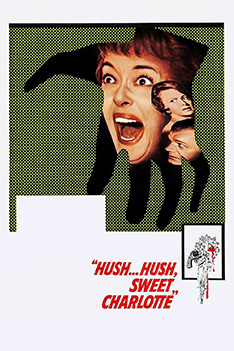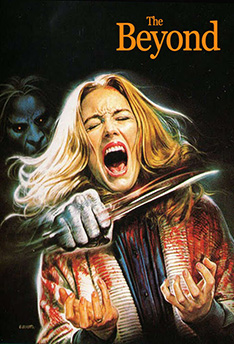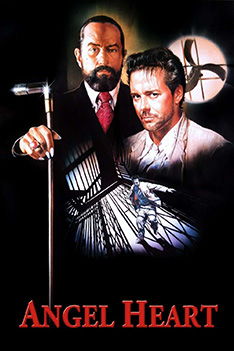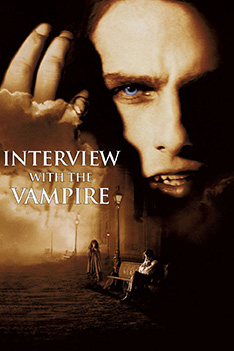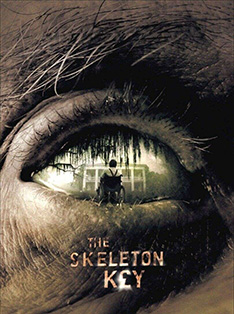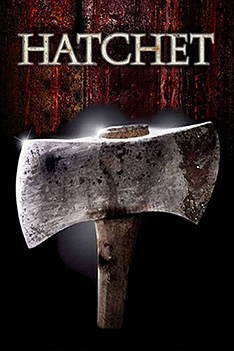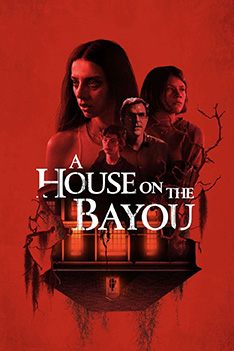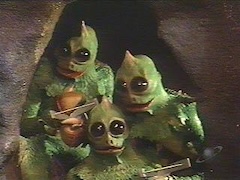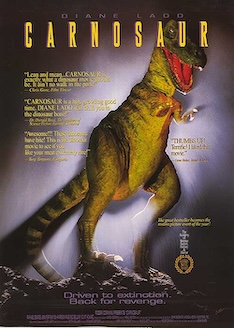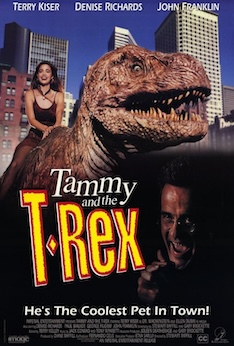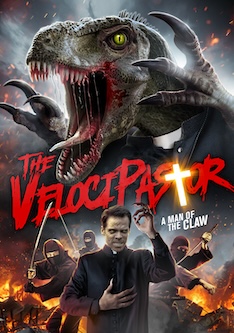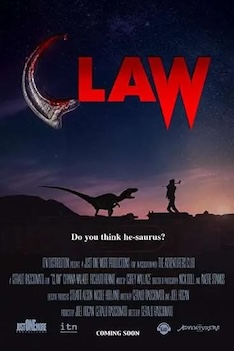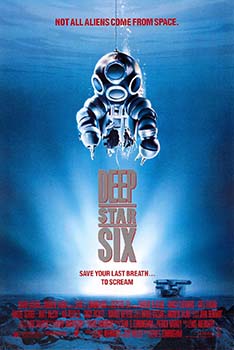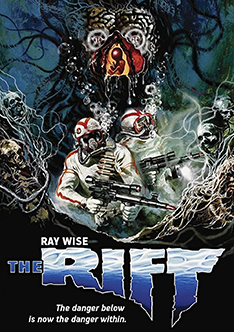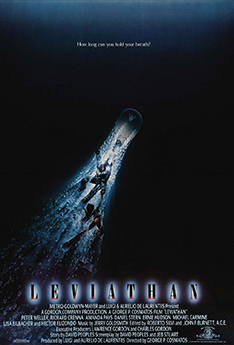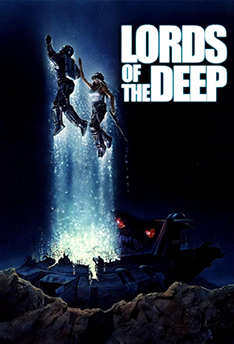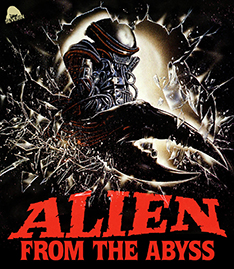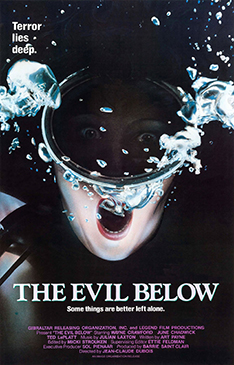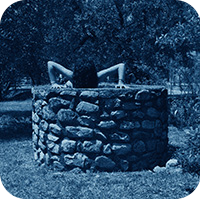Unfriendly Confines
Prefer to listen to this post?
You’re in a box. It’s dark. There’s only one thing to focus on. You really can’t make noise. Are you in a coffin or are you in a movie theater?
Greetings, travelers! And welcome to the first itinerary where we really don’t go anywhere. Or rather, the places we’ll visit just aren’t very spacious. It’ll be hard to move around much at all, so take a load off and try to relax as we explore a segment called Unfriendly Confines.
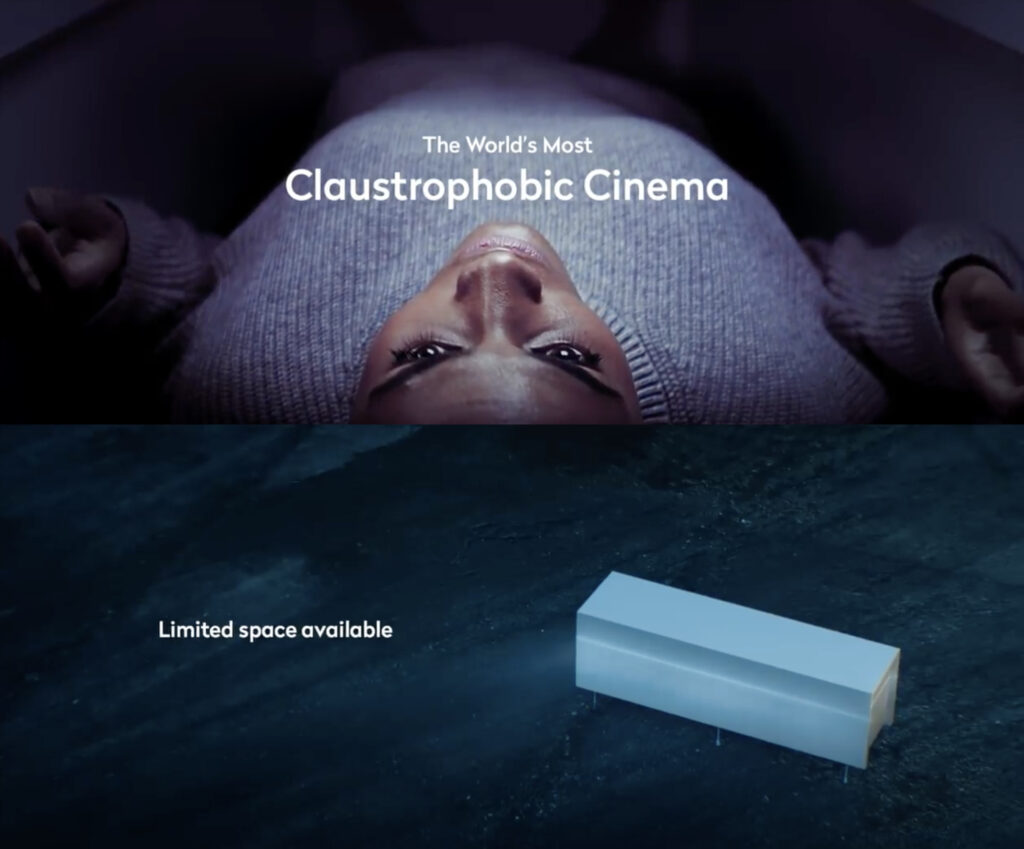
The earliest motion pictures were stage plays performed in front of a camera. How could it have been otherwise? The only directors around then were theatrically trained, so cameras were stationary like the fixed vantage of playhouse audiences. Actors were not yet accustomed to the nuance available when you didn’t have to shout your lines for the cheap seats to hear. The visual language of cinema was still in its infancy.
But we lost something once cinema figured out rapid cuts, unique angles, and sprawling panoramas. Single location films or ”bottle episodes” in TV, as they are respectively known, automatically heighten drama — or at least provide an opportunity for heightened drama — given their intimacy. It’s the same way you lean in to someone when you want to tell them something important … or give them a smooch. Tight quarters are always more dramatic, sometimes in a positive way and often in a very negative way. We of course will focus here on the negative. But before we get to that let’s also consider just the plain economics of single location filmmaking. It’s so much cheaper. Of course we love sprawling epics on the big screen, but a modestly successful film shot in one location — minus the expense of multiple sets, equipment transportation, location producers, etc — almost certainly means your film will make a lot of money.

Most single location movies are thrillers or horror. The reason should be obvious. With very little to look at or to propel the story other than the characters themselves the script (and dialogue) will necessarily be a deep dive into psychological states. Put another way, the space of a single location film is interior rather than exterior. And that can be very very scary, when done well. In the realm specifically of horror, single location films often devolves into claustrophobia. The space itself is a sort of character, providing motivation or challenge or frights simply by being so damn cramped.
Searching for historical beginnings in this micro-sub-genre is complicated by the limited spatial scope of all early silent films. Still The Cat and the Canary from 1927 is generally considered a starting point — and not just of tightly-constrained horror but of the entire “old dark house” setting that characterized so many Universal films through the 1950s. This film — originally a stage play, unsurprisingly — pulls a bunch of family members to a decrepit old house for the reading of a will which leaves all of the decedent’s estate to his most distant relative providing she can be proven sane after spending a night in the mansion. If not, there’s a second will to be opened denoting a different heir. Hijinks ensue (this is, in part, a comedy-horror) and an escaped asylum patient called “The Cat” enters the picture. It’s a fun watch, especially to see what later filmmakers built upon when mining for haunted house tropes and motifs. Note especially the hairy, long-nailed hand reaching through the wall at various points. The Cat and the Canary basically started the we’re-all-stuck-in-a-spooky-house-tonight theme and it’s still going. There’s a straight if dotted line from this film to 2019’s Ready or Not, also about a woman who must survive the night with family in a kooky mansion.
So let’s look at some confined space movies, going from roomiest to most cloying, like a slow-moving trash compactor.
Let’s start in a grocery store. And you know, it sure is foggy outside. That’s right, it’s The Mist from 2007, Frank Darabont’s re-telling of the classic Stephen King novella. Obviously a supermarket is not all that constrained as far as spaces go — and it is certainly well-provisioned. But the interplay of personality types surrounded by an unknown danger outside the all-glass facade of the building makes it seem a heck of a lot smaller. Interpersonal disagreements about what to do escalate quickly as evidence of the mortal peril the shoppers are in becomes unavoidable. So here’s my First Axiom of Single Location Horror: conflict shrinks space. No matter how roomy your confines, when things go south the drama ratchets up. Think about the last time you were on a subway, everyone minding their own business, and then someone does something causing upset (yelling, unwanted solicitation, vomit, whatever). Drama up, you shrink into yourself. The walls close in a bit.
We’ve left the grocery store, safely somehow, but we’re headed to our car, alone, in a parking garage. This movie is P2 also from 2007, a tale featuring only two people in the garage on Christmas Eve. Angela, just trying to go home for the holidays, and Thomas a security guard who also turns out to be a molesting, murderous psychopath. Some spaces — no matter how roomy — seem cloying. I’d put parking garages, especially at night, high on this list. They are never lit well enough, smell of gasoline, and there are no right angles along the x axis, which is disconcerting to the human brain. There’s a safe space, your car, but you have to find it and that in itself can be a source of anxiety. What makes this film work is how inhuman the space is. Parking garages are car storage; they are not for people. Just raw concrete and stains. So the Second Axiom of Single Location Horror: constraint isn’t only about square footage; it’s also a function of habitability.
Let’s go vertical a bit with Robert Eggers 2019 The Lighthouse. Like P2 this one features only two actual people. It’s a great example of psychological horror bleeding into mythological horror. Much has been noted about the standout performances of Willem Dafoe and Robert Pattinson in this tale of isolation and creeping lunacy. It’s a fantastic movie. You should watch it. You’ll get the sense of claustrophobia on this rock immediately. The point I want to make is that the job of a lighthouse is to demarcate space, but in an odd way. The light beacon is both saying “your boat shouldn’t be here or it’ll wreck” and “your boat is on the right path, good job, here’s your waypoint, keep going for safe harbor”. Put another way, it’s saying “get close, but not too close”. Uncomfortable quarters indeed.
Of note, Eggers shot this film in the unusual aspect ratio of 1.19:1, which is almost a square. Known as the Movietone ratio this was used mostly between 1926 and 1932 as silent films were transitioning to talkies. So in addition to reminding cinema nerds of this early phase of stage play films, or reminding today’s congenitally online hordes of Snapchat and Instagram videos, it’s an incredibly crammed visual space to work inside. Not unlike, say, a lighthouse. The film is also shot in black and white. There are nostalgic reasons for this, of course, but technically black and white film reduces the visual clutter, highlighting shape and pattern with the removal of color. It doesn’t make a space smaller, necessarily, but it makes what’s in the frame stand out with more contrast. Negative space is easier to highlight and bright light, overblown like a Fresnel lens swinging around in front of you, immediately consumes the whole space. All of which to deliver the Third Axiom of Single Location Horror: technical creativity in film can be just as useful in creating close quarters as the physical aspects of the set.
Sometimes the confined space is a literal stand-in for us, the viewers, sitting rapt in the theater. All iterations of voyeurism horror owe a debt to the great Rear Window from 1954 by Alfred Hitchcock. Rear Window is emblematic of and a possible decoder for Hitchcock’s obsession with single location (even single take) filmmaking — see Lifeboat, Rope, Dial M for Murder, and of course the shower scene from Psycho. More than anything Hitchcock here seemed interested in using confinement (literal in this case as James Stewart’s character is wheelchair-bound in his apartment for almost the entirety) to make a comment on the act of viewing and our desires as viewers. Those desires include morbid curiosity and male sexual fantasy. And that right there is a good description of the popularity of at least some genres of horror, like 80s slashers. It also is useful biographically when considering Hitchcock’s rampant misogyny. I love this movie for many reasons, but lately it seems even more relevant as hordes of would-be sleuths sit entranced by their computer or phone screens, Rear Window-like, attempting to solve mysteries of what they think is happening in the outside world. Looking at you, conspiracy theorists. But let’s return. The Fourth Axiom of Single Location Horror: often the constraint imposed by the space permits an extended view outward, revealing frights that would otherwise go unnoticed. Peeping Tom, One Hour Photo, and the somewhat recent The Voyeurs are good examples — though there are dozens of others.
Getting cabin fever yet? Climbing the walls? Maybe just seasonal affective disorder? Let’s quickly run through three very different films all of which showcase the diversity of confined spaces. Say what you will about M. Night Shyamalan, but his story for 2010’s Devil is 80 minutes of tight frights. Devil takes place almost entirely in a stuck elevator with five occupants aboard. One of them, it turns out, is Satan himself. Or herself. The lights continually flicker and usually there’s some new mayhem to deal with when the lights return. The five naturally start accusing one another. As ever with M. Night there’s a twist or at least an unforeseen reveal at the end. It certainly got me.
Then there’s Open Water from 2004 about two scuba divers in the tropics who surface to learn that their dive boat has left without them. That’s pretty much the movie: pure survival horror. The irony here is that the open sea could not be a less constrained space. You can go for miles in any direction (including down). Except of course you can’t because you have to eat, you’ll get cold, and you’ll eventually run out of energy. And oh and let’s not forget stinging jellyfish and hungry sharks. So you’re stranded by biological need rather than anything else. In some ways it’s worse than a broken elevator.
Changing climates we arrive at Frozen — no not that one — the one from 2010 that follows three snowboarding buddies who are stranded on a chairlift when the ski hill operators forget they’re there and shuts down for the weekend. This is also survival horror of course — where the threat is dehydration and freezing to death — but here there’s one, actually two, obvious ways out of the predicament: up to the transport cable or dooooooown to the snowy slopes below. Both are attempted; neither attempt goes well. Also there are wolves for some reason prowling the east coast The tension in all three of these films comes from the breakdown in personal relationships — five people, two people, or three people. Either trust falters, or individual self-preservation takes over, or latent horrible behavior emerges. This is the horror of movies where people are trapped in close quarters. It’s rarely about the threat posited in the trailer or promotional material. And so to our fifth and Final Axiom of Single Location Horror: Human foibles metastasize, usually catastrophically, in confinement.
But we’re not quite done. We have to get even more constrained, the ultimate and final constraint really. Buried from 2010 stars Ryan Reynolds in a coffin. For the whole movie. There are a few other actors, none shown except on a grainy cell phone screen and mostly providing only voice. This, my weary travelers, is the apotheosis of claustrophobia horror. There is not a single shot from outside the coffin. Indeed, there is not a single shot repeated in this film. I’d love to see how it was made, technically. Reynolds here plays an Iraq-based American civilian truck driver who is buried alive in a plot to extract a ransom from the American occupying forces. He is given a Zippo lighter and a Blackberry. We are Reynolds in this film, slowly suffocating both from the diminishing air and eventually from leaking sand. In fact, the sand sluicing into the coffin is almost a literal hour glass. You know time’s up when the coffin fills up. I think it works and perhaps is proof that good storytelling requires only … a good story. No elaborate sets, no hyper-realistic effects, no lore. And maybe that’s a bonus axiom which applies to all film: despite the affordances of modern cinema, ultimately to be successful a film must tell a good story. It’s just that sometimes you have to trap the story in a box in order to realize that.
What’s that? You’re itching to get out? A little stir crazy? May I recommend the following?
- 10 Cloverfield Lane in a doomsday bunker.
- Paranormal Activity in a small house.
- Bug in a motel room.
- 1408 in a hotel room.
- ATM in an enclosed ATM station.
- Panic Room in a home panic room.
- Pontypool in a DJ booth.
- Flightplan and Red Eye both on planes.
- Life on a space station.
- All the train-based horror we discussed on our last journey.
Well that’s it this week. For goodness sake, stretch your legs. Go take a long walk or something. Catch a baseball game. May your confines going forward be nothing but friendly.
A full list of the movies mentioned above can be found at Letterboxd. Find out where to watch there.
The Terror Tourist is my occasional segment on the Heavy Leather Horror Show, a weekly podcast about all things horror out of Salem, Massachusetts. These segments are also available as an email newsletter. Sign up here, if interested. Here’s the episode containing “Unfriendly Confines”:
Hell On Wheels
Prefer to listen to this post?
This week our journey isn’t about where we’re going, my tireless travel companions, it’s how.
I’m a train nerd, not quite what is somewhat derisively called a “foamer” (that is, someone who foams at the mouth at the sight of unique rolling stock) more like a casual trainspotter. My grandfather was an engineer on the Burlington Northern railway which is partially how my line ended up in Chicago. Maybe it’s in my blood. And on the subject of blood and trains, this week we’re talking about rail-based horror in a segment called Hell On Wheels. [play train noise ↓]
There’s a pretty compelling argument that one of the first films ever shown to an audience was horror. Or, at least, horrifying. L’Arrivée d’un train en gare de La Ciotat, a 50 second strip of gelatin emulsion and silver halide captured by the French Lumière brothers in 1896, shows a steam-belching passenger train pulling in to a station. That’s it, but oh the sensation it caused. New to almost everyone in the attendance, this moving image, this picture literally in motion of a giant train engine heading straight at the audience caused fear, panic, and fleeing to the rear of the room. It’s been called the founding myth of cinema. And it may be just that, a myth, in the sense that it may not strictly speaking have happened, but it’s also mythic in that it has become the primordial, uncontaminated, visceral audience reaction that every filmmaker — especially makers of horror — longs to achieve.
Trains were at the center of early innovation in spooky special effects. Just seven years after the Lumière boys’ train short an unknown filmmaker created its inverse, literally. The Ghost Train from 1903 shows a train coming around a curve and past a stationary camera, but the print is of the negative, a truly novel technique at the time. This spectral train is made even creepier by the insertion of a separate film of the sun and clouds, also in negative so looking like the moon, up in the corner. It’s a minute long, plotless like L’Arrivée, but it shows the beginnings of technical innovation in filmmaking for the express purpose of frightening viewers.
Even if we didn’t have these charming strips of turn-of-the-century transportation, it cannot be denied that filmmakers love trains. They add an aspect of dynamism, can travel through multiple settings in a short period of time, and offer a conveniently constrained storytelling and staging space for filmmakers to work with. More than one director has noted that trains are in fact metaphors for movies. In cinema, unlike literature, the viewer is not in control. The audience — at least in a theater — has to sit back and experience it until it reaches its destination. You may recall the opening moments of Lars Von Trier’s Europa where the visual similarity between the image of a train going over tracks (or overhead) and film running through a projector is made absolutely clear.
Trains were made for horror. Locomotives can be frightening simply because they are loud, powerful machines made of unforgiving metal — sometimes accompanied by fire, smoke, and sparks. Even better, there’s a whole type of train that only lives in dark, damp underground tunnels full of high voltage wires and rails and pizza-stealing rats. Trains often drag along all manner of characters readymade for horror films: drifters, bandits, late-night urban revelers, people brought together from very different walks of life. Even just the presence of trains can turn a place dark. The term “Hell On Wheels” was originally used to describe the shanty towns of sin that would pop up along the route of the workers as they laid the trans-continental railroad from Omaha to Sacramento. Violent, full of drunks and ne’er-do-wells, and temporary enough to be basically lawless these towns were ready-made to become ghost towns as soon as the rail line moved westward.
Travelers, it’s time to move into the main hall of the station, look towards the clacking of the departure flipboard, and review our options today. The rail yard is so full of train-based horror films we’re going to have to shunt most to sidings. Our departures here today will merely represent the breadth of destinations available in the sub-genre. All aboard! Let’s deadhead this itinerary.
Early experiments with film and trains notwithstanding, the genre mostly begins with Horror Express (1972). This is sci-fi horror with a similar premise to The Thing From Another World. An anthropologist brings the frozen body of an ancient human-like creature onto the Trans-Siberian Railway. Of course, it thaws and it’s … not pleased. Among those stalked aboard this express are Christopher Lee, Peter Cushing, and Telly Savalas. Horror Express is a must-watch for your itinerary.
Also from 1972 and also starring Sir Christopher — with Donald Pleasance at the height of his career — is Death Line also known as Raw Meat. Turns out, a group of Victorian workers who built the London Underground subway were trapped by a cave-in in 1892 and their descendants still live down there by way of cannibalizing hapless commuters. The movie ends with the sound of the cannibals echoing through the tunnels “Mind the gap!” What’s not to love about that?
Maybe the most important stop on today’s journey is Terror Train (1980) featuring Jamie Lee Curtis in her post-Halloween scream queen bender. The premise is everything you’d want in an 80s slasher. A group of graduating college kids, all of whom participated in a prank-gone-horribly-wrong three years earlier, have a masquerade party on a train trip and are picked off one-by-one by a killer who changes into the costume of each of his latest victims. Look folks, this is the only film David Copperfield ever starred in not as himself. And he gets a sword through the head. Somehow this is pleasing. I have always loved the dynamic between the train staff (all adults) and the passengers (all college kids). Everything about this film works, especially its ending. If you liked Jamie Lee Curtis in a costume party on a train in Trading Places you’re gonna love this. Turns out, there is a sequel called Terror Train 2 made 42 years after the fact, which I have not seen. Travelers, should I get a ticket to ride?
Night Train to Terror (1985), which certainly sounds promising, is an anthology made from three unfinished films shot years earlier. The only thing that makes this a train film is that it is framed by a conversation between God and Satan discussing the fate of passengers on their way to Vegas. These My Dinner With Andre interstitials are accompanied by what can only be described as a pop music video happening on the train at the same time. It was 1985 after all and MTV reigned supreme. God and Satan chatting it up, sure. But everyone knows that passenger service to Vegas ended in 1971. C’mon, people. It is absolutely clear that the segments here were intended for longer run times. There are plot threads that go nowhere, leaving only gore and boobs. Which, maybe that’s your thing. I consider this movie pretty much a train wreck.
What if the movie Hostel but on a train? Well, that’s the premise of Train (2008), three years after Eli Roth’s film. Apparently this was originally intended to be a remake of Terror Train, but it became something utterly different — probably after it saw how much buzz torture porn was getting. The setup is a group of American high school wrestlers on their way to a match in Ukraine who board a train to Odessa. Little do they know that every other passenger on board is a patient awaiting an organ transplant of some kind and the tourists are being harvested for theirs. A jostling train may be fine for torture and dismemberment, but it probably is not great for transplant surgery which is why the third act takes place at the ruins of what looks like a medieval hospital along the route. This is a fun movie, utterly derivative, but suitably gory with a believable final girl played by Thora Birch.
The Midnight Meat Train (2009) is why you really don’t want to take the last train of the night on a line that doesn’t run 24 hours a day. Who knows where that thing ends up? This movie, based on a short story from Clive Barker, stars Bradley Cooper and Leslie Bibb. (Brooke Shields is also in it, for some reason.) Bradley is a photographer trying to solve the case of disappearances in the subway late at night. He eventually discovers that a butcher named Mahogany has been responsible for murdering passengers on the midnight train. And the fact that he is a butcher is important because it isn’t cannibal Victorians living down there, but something far more warped from the mind of Clive Barker. I won’t spoil the ending because I love this film and I hope you do too.
D-Railed (2018) contains so many of my favorite things in a horror movie. It’s set on Halloween. It takes place aboard a train, and it takes place underwater. Mr. Tour Guide, you must be thinking, that’s preposterous! Let me explain. The movie starts with a bunch of folks on one of those candlelight murder mystery outings aboard a train. Then it becomes a heist movie. Then the heist goes wrong and the train crashes into a river and is partially submerged. But see there’s a monster in the water, the bastard child of the Creature from the Black Lagoon and the Marvel symbiote Venom. The hapless passengers eventually make their way out of the sinking train car wherein the film becomes a cabin-in-the-woods slasher . And then in the last of too many acts to follow for an 80 minute movie it becomes a ghost story. However, the kills here are gory and 100% practical. Points for that. Points also for Lance Henriksen’s top-billing paycheck earned for about three minutes of screen time.
Let’s take a special spur line to talk for a moment about Asian train horror. It’s an exceptionally robust sub-sub-genre. My favorite zombie flick of all time has to be Train to Busan (2016) from South Korea. This is a great film, period; it just happens to talk place mostly on a train, in train stations, or in train tunnels. And, unlike many films discussed here, it uses the physical setting — rolling cars on tracks — as part of the plot, not just part of the setting. Like old time westerns where the roof of train cars allows cool chase and showdown vignettes, the actual train to Busan is used creatively and surprisingly. Train to Busan has spawned an animated prequel called Seoul Station, also excellent, and a standalone sequel called Peninsula which I have not seen. Junkrat Train (2021) from China is, well, about a train infested with rats. The more high-minded but no less fun Kisaragi Station (2022) from Japan takes an Internet meme about a fictional, supernatural train station and rolls with it.
When my family and I first moved to Denver we often heard a train whistle in the distance, especially late at night. But here’s the strange thing: there were no rail lines anywhere near where we lived in Denver. We searched for the source of this train whistle for months before eventually giving up and simply saying “well, there goes the ghost train again”. It became oddly comforting. If you like ghost trains too be similarly comforted in knowing that there are at least 19 films (most but not all of which are horror) with this name.
There are loads of horror films that use trains only partially and to great effect — let’s call this intermodal train horror. For example, the final scene of Drag Me to Hell (2009) shows the cursed protagonist, Christine, as she falls onto the tracks ahead of an oncoming train. We’re meant to think that death-by-smooshing is the calamity headed for her, until she realizes in that very moment that her efforts to avoid hell were thwarted — and it comes clawing. Rabid, An American Werewolf in London, Friday the 13th VIII (the one which has 20 minutes in Manhattan), and the original Creep all have great sequences aboard rolling stock.
As noted this review of train-based horror barely makes a dent in the subgenre. Others worth exploring if you have a one-track mind include Beyond The Door III, Snakes on a Train, End of the Line, The Tunnel (reviewed on this show last April), and Ghost Track.
In 2007 I rode a magnetic levitation train called the Transrapid, the world’s first production-grade maglev for transit. It runs from the Shanghai airport to the edge of the city and reaches a maximum speed of 268 MPH. This may be the most scared I have ever been on a train. For one, I was the only passenger in my car, possibly the only passenger on the train. For another, when I worked my way up to the cab at the front of the first car and peered in through the dark glass as we broke 250 MPH, I saw the sole engineer enthusiastically reading a comic book not ever looking at her controls or out the windshield. WTF. But mostly it was the knowledge that a derailment (if that’s the term for magnetic de-coupling) at this speed would never be survivable. Especially so since the entire route is elevated a few stories above grade. A crash of this train would essentially be that of a slow-moving, low-flying airplane. It’s all I could think about. I enjoyed it, I suppose, in the same way that a roller coaster is enjoyable. Might be thrilling, might kill you even without a maniacal killer aboard. Who knows? And maybe that’s why there are so many films in this niche genre: the very thing you’re traveling on is a potential threat.
OK, tourists, it’s the end of the line. Thank you for joining me on our search for the dark at the end of the tunnel. May your movie viewing always find you on the wrong side of the tracks.
A full list of the movies mentioned above can be found at Letterboxd. Find out where to watch there.
The Terror Tourist is my occasional segment on the Heavy Leather Horror Show, a weekly podcast about all things horror out of Salem, Massachusetts. These segments are also available as an email newsletter. Sign up here, if interested. Here’s the episode containing “Hell On Wheels”:
Garden of Forking Paths
Prefer to listen to this post?
My traveling compatriots, I know it has been a wearying year of sites and topics, but we can’t let up now. We’re gonna get super lost today. Maps won’t work. Itineraries will be an illogical mess. Today we’re gonna talk about non-linear horror in a segment called The Garden of Forking Paths.
The shortest path is a straight line, right? Probably, if we forget about bizarre quantum behavior and wormholes, but sometimes a line that isn’t straight at all can make for an interesting story. It’s true that the constraints of film — which are produced by someone (or group of someones) controlling the progression of a story which has a discrete beginning and end — make non-linearity difficult and sometimes confusing. Moreover the format of film basically disallows choice or meaningful interactivity from the viewer. But this difficulty, this resistance in the materials so to say, can deliver compelling and often unsettling films. Non-linear storytelling is most common in thrillers and to some extent drama, but it’s the very way that going against convention destabilizes the viewer that makes it perfect for horror, when done well.

The title of our journey today, Garden of Forking Paths, refers to a 1941 short story by Argentine author Jorge Luis Borges (full text here) in which he describes a writer who has created an infinite text which forks off a new story from every single event in his novel. While we don’t have that (in any form of fiction) the internet has, in a way, given us a garden of forking stories, however amateur, in the terabytes of fan-fiction that are spun up extending beloved or cult novels and films. This doesn’t happen as much in horror as in other genres, though it certainly does happen — even sometimes convincing studios to make actual films based on fan concoctions and hoped-for franchise crossovers. Or sometimes fans just take it upon themselves, copyright be damned, to make films out of stories they dream up. For example, the surprisingly good Never Hike Alone, is one of 19 fan-made films listed for Friday the 13th on IMDB. (I struggle and fail not to mention the largely fan-driven Amityville universe, which at the time of this recording, consists of 56 films. This may be the closest we’ll ever get to Borges’ garden, sadly.) The horror-adjacent genre of true crime also spins out dozens of potential storylines by virtue of the fact that these shows often do not have an ending, some of which like Unsolved Mysteries come right out and tell the viewer so. Everyone watching these shows has a theory and amateur sleuths set off on sometimes ludicrous attempts to provide their own narrative conclusion.
But these are all exceptions to traditional filmmaking and you could argue are examples of derivation rather than non-linearity. So what about actual non-linear horror films? OK, travelers, fine, let’s get back on the path — but I told you I’d lose you. The irony is that most films are not shot in a chronological sequence that conforms to time as depicted in the movie. This of course is for logistical, often economic reasons. But my guess is that some directors — in shooting out-of-sequence — are presented with new artistic possibilities of contrast, juxtaposition, or information disclosure that weren’t in the script to begin with. This is just a personal theory. Any listeners out there who direct films, please tell me how wrong I am.
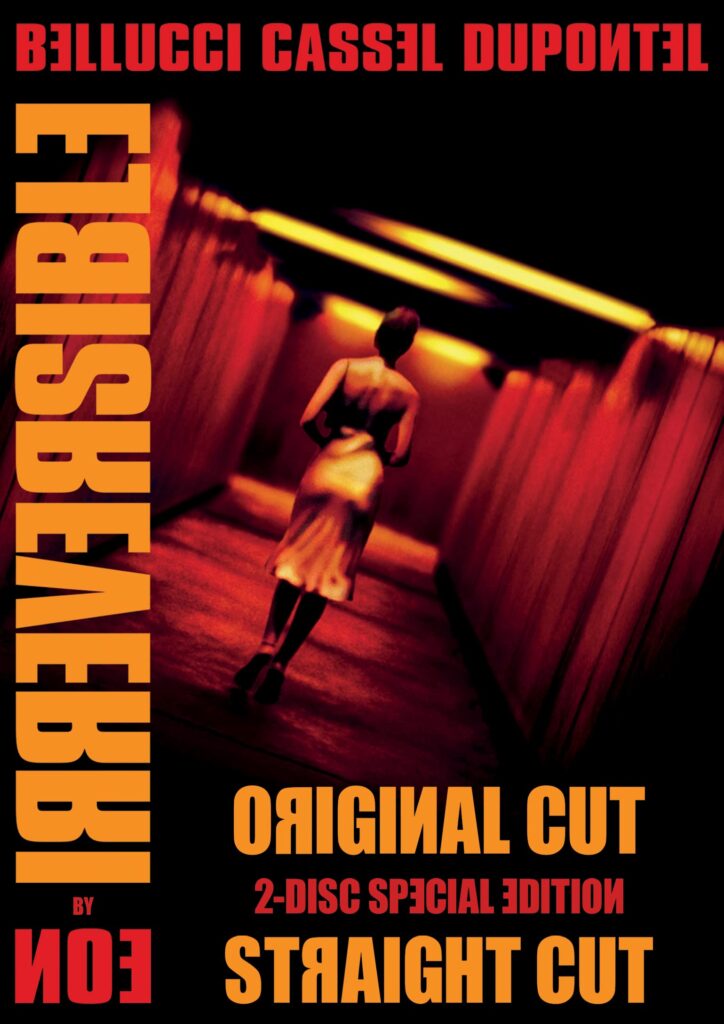
The simplest kind of non-linearity are flashbacks and rewinds. Many horror films contain at least a bit of storytelling purely for backstory purposes. When this is done anywhere but the beginning of the film that’s a flashback. There are too many examples of this to list, but some films use flashback in novel ways. The original Cloverfield, a kind of modern-day Godzilla flick, is presented as the continuous footage from a camcorder the night of the film’s mayhem. The expository flashbacks occur in sequence, though, as they are snippets of home movies previously recorded on the tape that is being recorded over imperfectly the night of the events of the film. It’s quite clever. Many of the Saw franchise, certainly the first, only make sense once the chronological events of the film are decoded via an elaborate narrated flashback at the end of the film. This flashback is a kind of storytelling in reverse, an actual rewind re-interpreting the events you just witnessed through a different frame. The 2002 French film Irréversible by Gaspar Noé presents an entire film in reverse, which of course inverts the audience’s normal sense-making task and expectations. The film follows two men attempting to avenge the rape and beating of the woman they love. It is also one of the most graphically brutal films I’ve ever seen. Two versions of this film exist. The original at 97 minutes and the “straight cut” told in forward chronology at 86 minutes. Having not seen the straight cut I don’t know which 11 minutes were cut out, but it does make me wonder if they contain plot points that are only necessary to avoid complete confusion in the original, reversed telling.
Moving into more complex non-linearity are time travel and time loop-based horror films. Listeners need only loop back one episode in their podcast queue to last week’s Heavy Leather Horror Show for a good example of a horror time loop (played out literally as spatial recursion) in the film Drive Back. Time loops work especially well in comedy and horror, related genres in so many ways, because they give the audience the opportunity to wonder how the next iteration will deviate from the previous. This is a setup for a laugh (in the case of comedy) or a surprise (in the case of horror). Time loopy horror, though, benefits from the very claustrophobia of the conceit. Being trapped in time is no less scary than being trapped in a space. Scarier, in some ways, because at least characters can die trapped in a space; often in time loop tales they can’t even perish, trapped forever in a looping hell of the same events over and over. Another good example in this sub-genre is the film Every Time I Die, “the story of a man, who after being murdered, finds his consciousness transferred to the bodies of his friends and tries to warn and protect them from the killer who previously murdered him at a remote lake.”
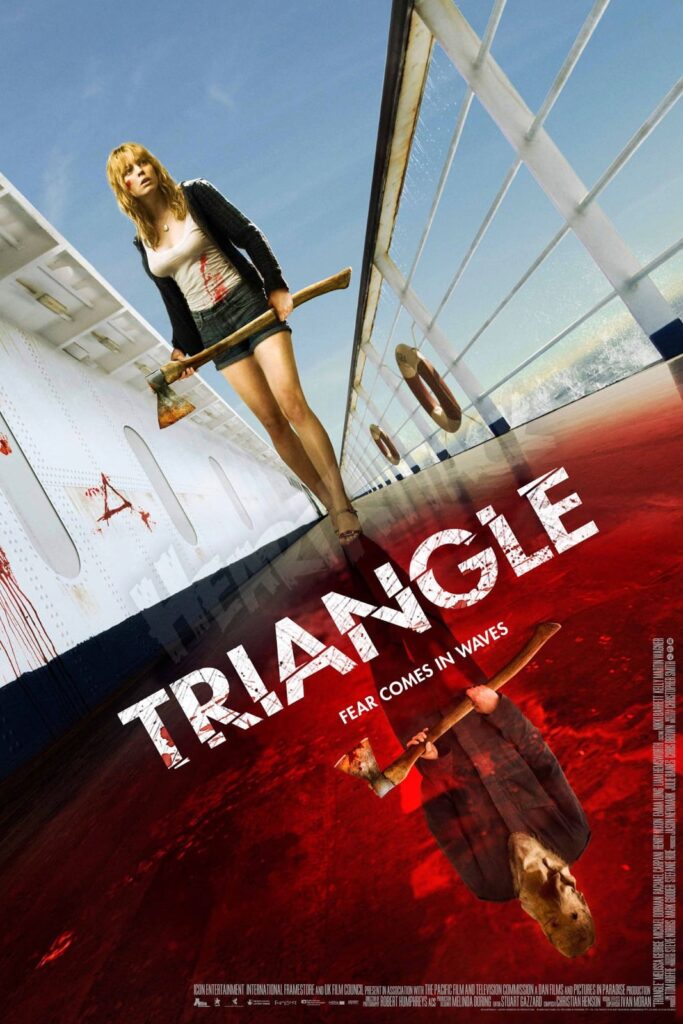
This week I watched Triangle a 2009 British piece of non-linear horror that really leans into the intrinsic terror of being caught in a loop which becomes a downward spiral as the realization of helplessness sets in. A single mom named Jess, played by Melissa George, with a fraught relationship with her young autistic son decides reluctantly to go on a sailboat excursion with friends. The boat is capsized by a freak storm and they all cling to its hull until an ocean liner with a single figure on its deck comes by. They board it and things start getting weird. For one, it’s empty except for a hooded figure trying to kill them all with a shotgun. Clocks are not in synch. Everything seems strangely from the 1920s. Eventually Jess figures out it is herself — or a version of herself — with the hood and shotgun and that she’s in a horrible loop. She does eventually escape the boat-based loop only to find that she is in another, more terrifying one. This isn’t a scary movie or a gory movie, but it is psychologically harrowing, especially at the end. Or rather, especially when the movie stops.
The majority of non-linear horror is more difficult to classify. There’s no accepted term for the kind of psychological horror whose narrative logic seems pulled straight from dreams. Let’s call these dreamtime films. Psychedelic, nested, or often completely illogical, these films are more about how they make viewers feel rather than providing a coherent narrative. This is non-linearity not as a storytelling device but as a mood-setting technique. What impressionism is to realism in painting. And it works so well in horror. Just the break with convention can be upsetting to a viewer, forget about jump-scares or blood (though they contain those too, of course). Examples of dream-like non-linearity include: Climax (an even more fucked-up film by Gaspar Noé), In The Mouth of Madness, Jacob’s Ladder, Annihilation, Possession, and Videodrome.
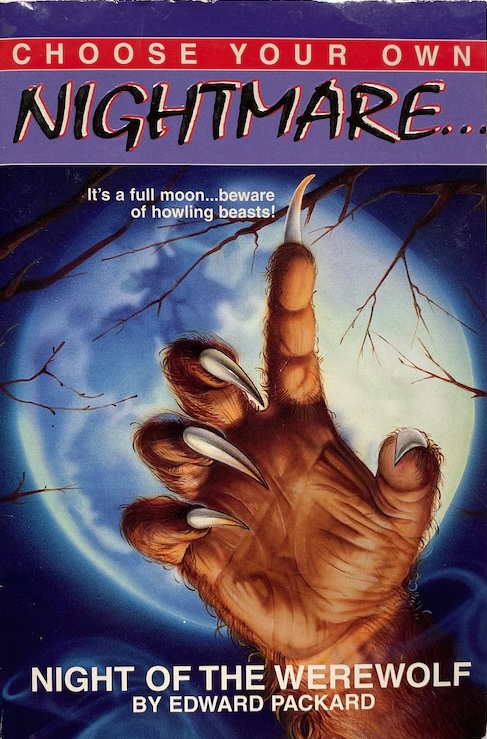
Travelers, let’s stay with horror but step just off the path of film for a moment to talk about true non-linearity, which is to say, interactive storytelling. If you are of a certain age you surely remember the book series from the 80s called Choose Your Own Adventure. These books were presented as literal forking paths where readers would decide what the protagonist should do at various decision points. They were fun, though of course they were finite — an example of what literary theorists call interactive multi-cursal (that is, many paths) storytelling. The reader’s agency was limited of course: go to this page or that page based on a fairly binary choice (i.e., “pick up the hammer” or “pick up the milk carton”). Some of the stories in the original Choose Your Own Adventure were horror tales (like “House of Danger”, “Vampire Express”, and “Ghost Hunter”) and there was even a 90s knockoff called Choose Your Own Nightmare. The niche electronic literature genre known as hypertext has few classics but one of them has to be Shelley Jackson’s 1995 Patchwork Girl, a re-telling of the Frankenstein tale. It’s so much more than that though: what seems like disarticulated scraps of text eventually comes alive, stitched together like the original monster. Being computer-based, Patchwork Girl has sophisticated mechanisms in place for allowing you to continue reading along paths only if certain passages have already been read (or not read). I highly recommend seeking this out. It’s on the platform called Storyspace.

But really interactive horror that would actually frighten someone (and which gave more than yes/no decision-making opportunities) had to wait until video games in the early 2000s. Classic survival horror like Resident Evil pioneered the genre, which would reach its full maturity in titles/franchises such as Silent Hill, House of Ashes, Until Dawn and my personal favorite Dead Space. Indeed many video games today use the same techniques as film — real-world sets containing actors in motion capture suits for instance. And the graphical capabilities of today’s machines make verisimilitude the norm but of course never a constraint.
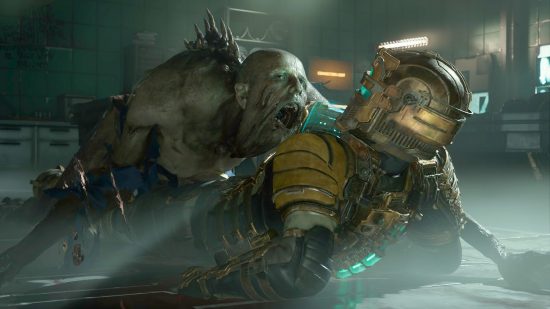
The question often asked is: can you be truly scared when you’re in control of what happens? My answer is absolutely yes, indeed I am sometimes more frightened playing a horror game than when watching a film. Being disemboweled as a consequence of your own actions is a lot worse, for me, than simply watching someone on the screen dump their guts on the floor. I would even say that I have seen horror gaming as a gateway experience for people who would otherwise never watch a horror movie. The sense of control was enough to get them to play a game but then, having enjoyed it, they sought out horror films.
The viewer-in-control aspect of video gaming has even wandered back into film. The 2018 Black Mirror episode called Bandersnatch required new functionality to be built for the Netflix player. The story follows — or at least begins with — a software developer trying to get a game published. You, as viewer, determine the choices he makes. It’s just the right balance of sit-back enjoyment and lean-forward engagement for my taste. The runtime says it is 90 minutes long which may be what happens if you make no choices at all (after 10 seconds the story continues along some default path), but to view everything would take 312 minutes. The shortest possible path to a point called an end is 40 minutes. It’s all live action and, being Black Mirror, quite dark. I do not think Netflix has done anything further with this functionality, but I wish they would.
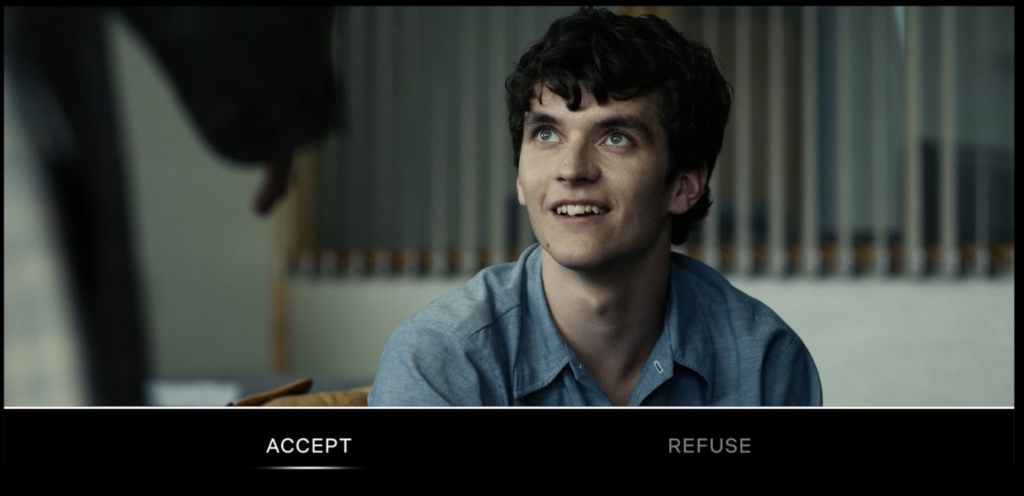
Previously on this show I have plugged a phone app called Guide Along. It’s meant to tell you about things you are seeing on road trips, often but not always through national parks or exceptionally scenic drives. The key to this app is that the story segments are entirely GPS-based. Wherever you are it tailors the content, even reminding you to drive the speed limit lest you trigger a new story too soon. This is non-linear storytelling too, of course, where it isn’t the viewer’s decisions so much as their literal location that determines the sequence. I don’t think there’s an application for this in horror filmmaking, though there could be in haunted house attractions. If you are an investor and this idea appeals to you please call our hotline at (724) 246-4669.
Well that’s it, travelers. Hope you weren’t too flummoxed by today’s journey. Actually If you’re not confused I did this wrong and I recommend you watch any of the films mentioned here. Until next time, whichever timeline that is!
A full list of the movies mentioned above can be found at Letterboxd. Find out where to watch there.
The Terror Tourist is my occasional segment on the Heavy Leather Horror Show, a weekly podcast about all things horror out of Salem, Massachusetts. These segments are also available as an email newsletter. Sign up here, if interested. Here’s the episode containing “Garden of Forking Paths”:
Pied-à-Terror
Prefer to listen to this post?
There is no more important location in horror fiction than the house. The geometry of surfaces that creates an inside where only outside once was, subject to the decay of time like a human body, able to be loved, often to be feared: the haunted house. Tourists, as I speak to you now from a home emptied of the people I love and denuded of the artifacts which made it a place of life, I plot today’s itinerary inside an actual haunted house, haunting at least to me, if not by ghosts, then by memory — which may, frankly, be the same thing. Today we explore the horror of the built environment in a segment I call Pied-à-Terror.
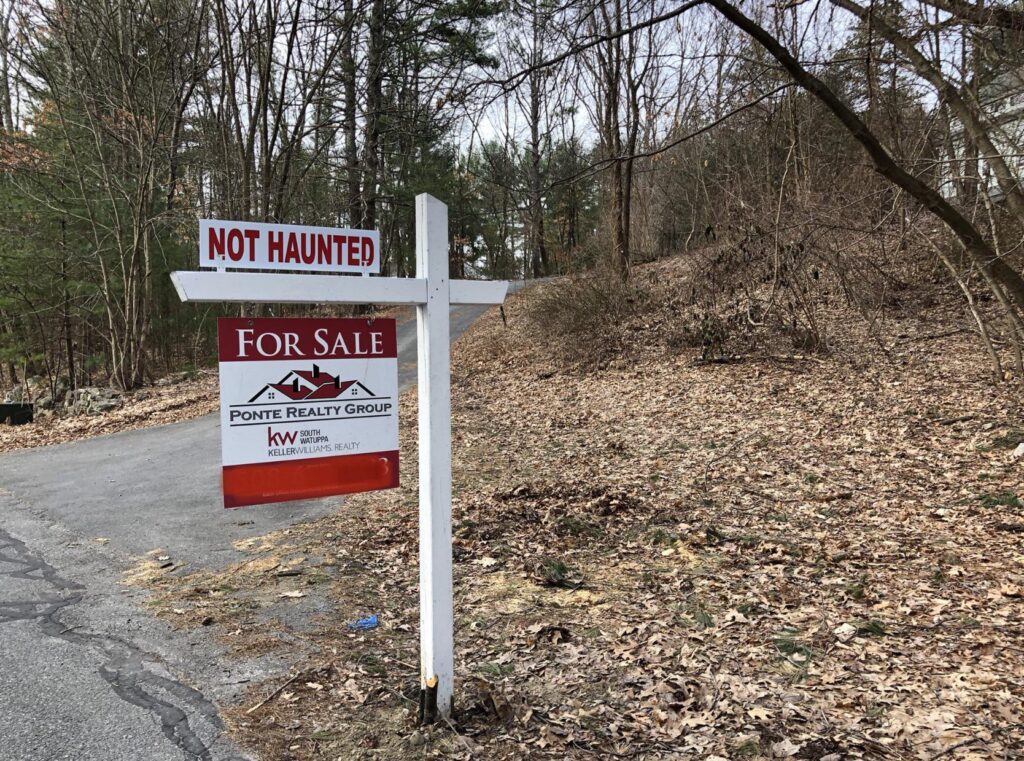
Let’s ask a fundamental question as we begin our journey. Why is so much horror fiction set in houses or other built places of living?
Houses are made for people to live in (as opposed to barns for animals or sheds for storage). There’s a sense that when homes aren’t occupied by people they are at best cold and empty, at worst somehow desirous for other things to move in. We have an urge for homes to be populated, usually by people, and if not then reminders or ghosts of people. They are vessels for living and we want to fill them with something. This is why it is demonstrably more difficult to sell a house that has no signs of life at all (no furniture, etc) than one that is.
Historically, most people have died in their own homes, at least since there has been the concept of a home, and usually they’ve passed away inside bedrooms. Even today some terminally ill people choose hospice inside their homes specifically so that life can end there rather than in a hospital. People who have died — by choice or not — in a home are of course the source of the innumerable ghost tales associated with haunted buildings. We anchor people to location probably more intensely than any other correlative other than smell. (You simply can’t beat smell. Thanks, lizard brain!)
Scientists call this the “sensed-presence effect”, the feeling that there is another person present when there is not. This is explained as a result of monotony, darkness, cold, hunger, fatigue, fear, and/or sleep deprivation. All things that happen to people, especially when alone in a house. Other explanations proffered include hypnagogic hallucinations, restless leg syndrome, and of course very often outright hoaxes. Sometimes it’s the actual decay of a building that is to blame. Carbon monoxide, pesticide, and formaldehyde can lead to hallucinations and have at least on a few occasions been documented as the source of perceived hauntings. Clear up the monoxide leak, no more ghosts.
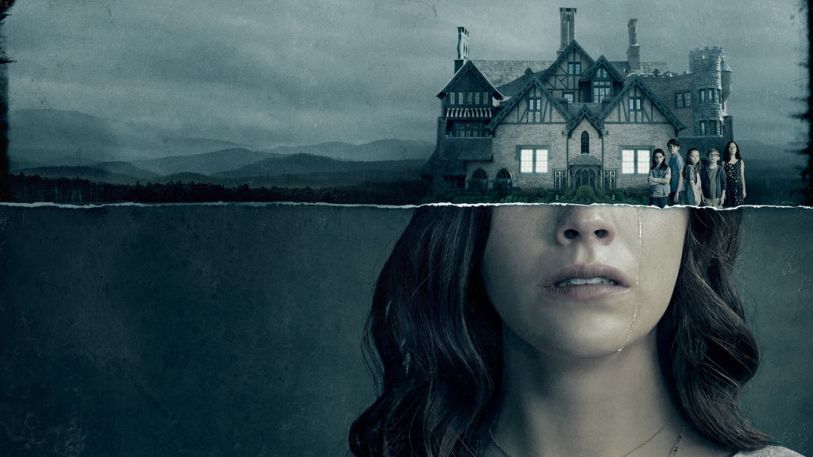
A poll from almost 20 years ago noted that 37% of Americans, 28% of Canadians, and 40% of Britons believed in haunted houses. I bet the numbers are higher now. But haunted houses are one of the oldest beliefs around. Pliny the Younger, the author from first century Athens, wrote what we think is the first tale of a haunted house, in this case a Greek villa bedeviled by a scraggly, bearded man in chains who really just wanted his bones properly interred.
Haunted houses more recently are, of course, everywhere. They are an entertainment industry totally separate from books and movies, especially around Halloween. And their popularity seems to be increasing: I’ve noticed many temporary haunt attractions just staying up and re-theming as Christmas-inspired haunted spaces. Soon it will never not be haunted house season.
Haunted architecture in horror movies specifically fall into a few categories. Let’s walk through this neighborhood together, tourists. Hold hands if necessary.
Our first stop you’ve visited dozens if not hundreds of times before. It is the traditional haunted house (and its inbred cousin the cabin-in-the-woods). If there is a single icon of horror cinema, it is this — the ornate Gothic or Victorian mansion, usually up on a hill, often in a state of disrepair. The formula varies, but, like obscenity, you know it when you see it: Norman Bates’ house in Psycho, the neoclassical mansion from both Phantasm and Burnt Offerings, the haunted house on a hill in Shirley Jackson’s The Haunting of Hill House, New England’s iconic The House by the Cemetery (1981), even the Art Deco castle of the pre-Code blockbuster The Black Cat (1934) — the list is effectively endless. All manner of bad things happen in these houses which are really just dressing on a corpse.
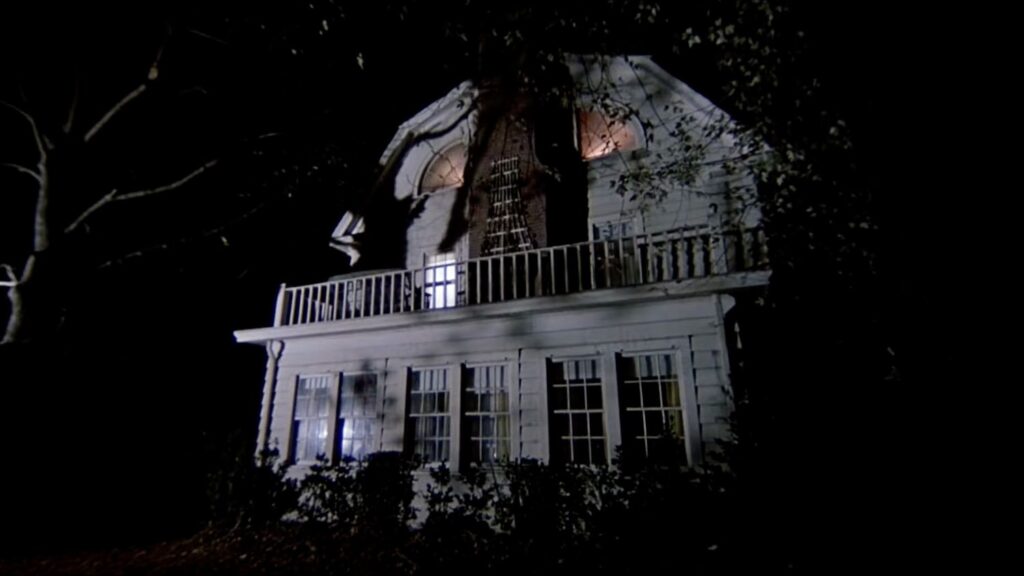
Tourists, let’s take a quick peek down this side street before we get to the next stop. Often what I have called traditional haunted houses are simply creepy locations for the purpose of mood-setting; the threat is something inside (like ghosts) or outside (like home invaders). But sometimes it is the building itself that is the malevolence. Think of the house at 112 Ocean Avenue in Amityville, NY (not to mention that its facade actually looks like a menacing face) or The Overlook Hotel in Kubrick’s take on The Shining, or the outpost dormitory of Robert Eggers’ 2019 The Lighthouse. All of these structures are the antagonists, even while they possess or animate otherwise good people to do very bad things. Put another way, the houses are the source of the misbehavior rather than just the setting for it. This was the twist in Insidious (2010): where all the signs pointed to the home being evil we’re told quite explicitly “It’s not the house that’s haunted”.
One last excursion in this neighborhood if you will: we’re entering the cul-de-sac of suburban horror. The houses in these locales are not exactly terrifying, but their location — in seemingly cozy, safe subdivisions — and their very un-exceptionalism make the horrors they contain that much more disquieting. You probably don’t live in a decrepit castle, but you have at least been in a residential neighborhood. The message in these movies is that the crazy person with the machete will get you either way. Sometimes the very sameness of the homes of suburbia is the scare. Take Vivarium (2019) about a couple who cannot escape — as in, literally cannot find their way out of — the monotony of identical townhouses that make up their community. Poltergeist (1982) was one of the first movies to foreground suburbia as, if not the villain exactly, at least the problem. Developers intent on turning rural land into a planned community place a new home directly above a cemetery, moving only the headstones. It’s a deliberate commentary on suburbia as Steven, the Dad played by Craig T. Nelson, is a real estate agent. Even the original Halloween (1978), set in the fictional community of Haddonfield, places the killer on leafy sidewalks of what would otherwise be the most non-threatening of neighborhoods. In a nod to tradition (maybe), Carpenter used a folk version of a Victorian house for the Strode residence. Suburban homes became such a trend for a while (A Nightmare on Elm Street, The Gate, and countless others) that the first full-throated meta-horror, Scream (1996), was set precisely there.
Our next neighborhood, my tourists, is known for its surreal architecture. Sometimes these Escher-esque places are inhabited by ghosts or monsters, but in all these stories the frightening core — and often the thing that kills — is their spatial disorientation. I have personal experience in this regard. The first office building I worked in, called Wildwood Plaza in Atlanta, was designed by renowned architect I.M. Pei and opened just two years after his pyramid entrance to The Louvre debuted. Like any young idiot new to office culture I could not find my way around, but I later learned this was by design. Pei loved messing with right angles, which is to say, not having them. The halls, ceilings, and many rooms of Wildwood Plaza lacked traditional 90° joints between planes. It was wildly, though not always consciously, confounding. As right angles do not exist in nature, except accidentally, humans have come to rely on them to create orderly, understandable, legible spaces. And when that convenience is missing, we get confused or feel trapped. Which is why illogical or impossible spaces are so prevalent in horror. When characters are disoriented, so are we the viewers.
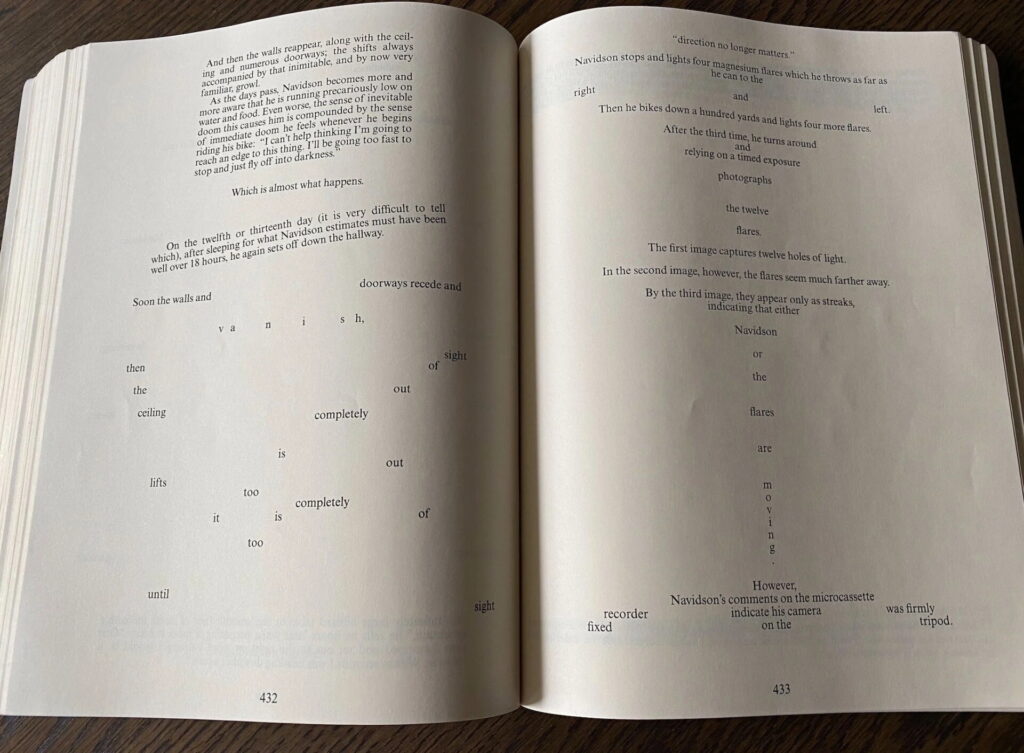
The touchstone of this genre has got to be the book House of Leaves (2000) by Mark Z. Danielewski. To say that House of Leaves is a story-within-a-story is to leave out at least a half-dozen nested stories. But, at root, is a documentary film purporting to show the lives of a family as captured by their in-home camera system. Their house begins to change in very non-Euclidean ways — doors appear were once only walls stood, corridors extend impossibly beyond the house’s exterior envelope, a gigantic seemingly endlessly-descending spiral staircase appears inside a maze at the end of a hallway. The thing about this book, though, is that the writing style and format are simultaneously metafictional, with multiple narrators at cross-purposes, dozens of different typefaces and colors in use, and even pages that require physically rotating the book or reading it reflected in a mirror — all of this is the house-as-maze-like book or maze-like house-as-book. They are both haunted.
Danielewski’s novel has never been made into a film. I’m not sure it could be. But hoo boy would I watch it if it were. (Sidenote for game nerds: there is a Doom mod called MyHouse which was purported to have been created from a simple house map that the creator’s friend, recently deceased, left on a floppy drive. It is very much not that as the house shifts its shape and orientations, just like House of Leaves.)
Cube (1997) is a perfect example of, if not strictly-impossible, then highly improbable architectural horror. It follows five people who find themselves in perfectly square rooms that containing numbered hatches on the floor, the ceiling, and every wall which lead to exactly similar rooms, though each has been separately set with deadly traps. By way of prime number mathematics and, helpfully, learning that one of their cohort was hired to design the outermost shell of the maze, the group devises a plan of escape only to learn that, in fact, the structure is more of a Rubik’s Cube than a static one. The rooms can reconfigure and attach to different rooms. Like the rooms themselves, the movie Cube has led to three other near-duplicates of itself Cube 2: Hypercube, Cube Zero, and a Japanese remake.
Other good examples in this sub-genre include The Platform from 2019 about a vertical prison whose inhabitants are fed by a giant dumbwaiter that drops daily from the topmost floor through 333 levels, leaving the lowermost with nothing but crumbs and gristle, Relic, an Australian film from 2020, where the house of an elderly widow comes to mimic her own dementia, and even to some degree the haunted hotel room film from the Stephen King short story 1408.
Tourists, let’s end our walking tour at some places that deserve special attention. Here are two films that stand out precisely because they are about architecture per se.
The Night House (2020) begins with Beth whose husband, an architect who designed and built the house she lives in, has just committed suicide. One of her friends consoles her saying “You spend so much time with in the same space with someone it’s gonna feel like they are there even when they are not.” If you’re looking for the TL;DR version of this essay on haunted houses, that quote is it. As Beth attempts to deal with her grief she suffers from what seem like hallucinations until she stumbles upon a set of floorpans for a reversed version of her house. Eventually deep in the woods she finds an actual reversed copy of her house filled with ghostly women who look similar to but not exactly like herself.
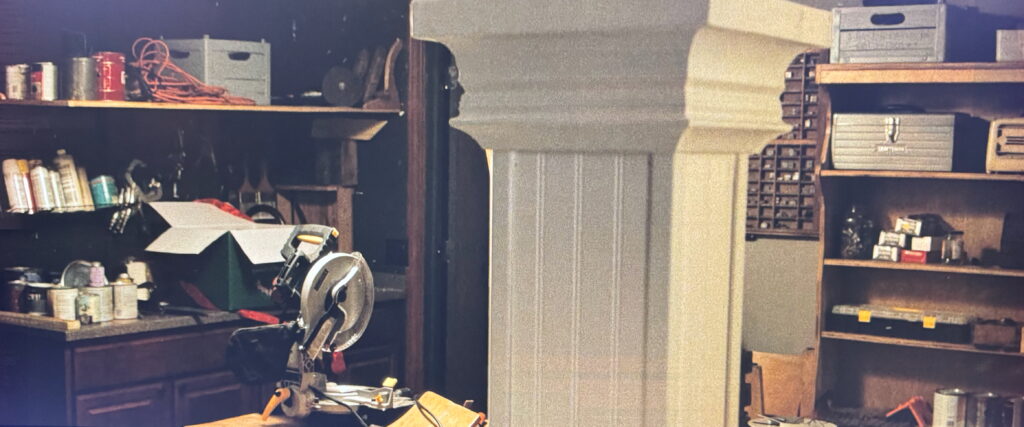
This film makes great use of literal architecture as the source of fright. There’s a scene where Beth notices that the shadows cast by the moulding atop a basement pillar look unsettlingly like a human silhouette. It’s so clever and well-executed that I missed it, until the shadow moves and I jumped out of my seat. Without spoiling the movie I will say that Owen’s construction of a house-in-reverse is an attempt to fool dark forces out to get Beth who seems to have thwarted their plan for her years ago. The crazy house is actually the solution to the haunting rather than the haunting itself. A very novel take on the trope indeed.
Written and directed by Lars Von Trier and starring Matt Dillon, The House That Jack Built (2018) is a story that hangs off the scaffolding of the structure of Dante’s Inferno. It’s told through a series of flashbacks to the murders of Jack, a wannabe architect and very definite serial killer. The movie contains a narrated dialogue between Jack and Verge (obviously Virgil from Dante) as he descends through his crimes and the nine levels of hell. At one point Jack says “The old cathedrals often have sublime artworks hidden away in the darkest corners for only God to see or whatever. One feels like calling [him] the great architect behind it all. The same goes for murder.”
Throughout the film we’re shown Jack attempting to build his own house from scratch, becoming dissatisfied with his progress, bulldozing it, and starting anew. Meanwhile he’s still killing, often disgustingly so. The movie’s climax takes place in the freezer where he keeps all the corpses of his victims. Verge appears, no longer just an overdubbed narrator, and reminds Jack that he’s never been able to complete his house between all the murders. So, improvising, he arranges all the dead bodies into the shape of a house. It’s a very disturbing image. Jack and Verge enter the house and drop down through a hole in the floor just as police are cutting their way into the freezer. I won’t spoil the epilogue, but if you know Dante you know how this ends. Ironically it is the failure of architecture — in this case a collapsed bridge across the River Styx — that plays a fateful role for Jack.
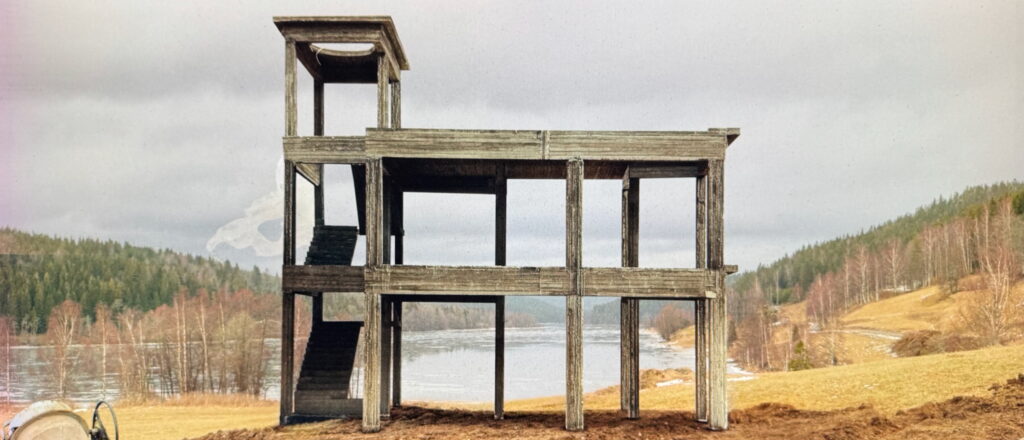
Of note, this is very long for a horror movie. Over 2.5 hours. Probably could have used a heavy-handed editor and would have been a fine flick without the Inferno metatext and frequent digressions into William Blake, Albert Speer, and others, but I don’t fault its ambition and it does not bore. Of note, there’s brief but very hard-to-watch animal cruelty in one flashback. (It’s CGI, but still.)
A poll from a few years ago found that 64% of people surveyed prefer to watch horror at home rather than in a theater. For movies of all genres the percentage of people who prefer to watch at home drops to 55%. Of course the theater is a different experience entirely (immersive visuals, superior sound, communal experience), but maybe the 9% point difference is meaningful. Maybe there’s something about being scared in the comfort and safety of your house which adds to the allure of horror movies. Is it possible that for that 90 minutes we enjoy living in our very own haunted house?
OK tourists, I hope you enjoyed our excursion today. Time to go home. May I suggest putting on a scary movie?
A full list of the movies mentioned above can be found at Letterboxd. Find out where to watch there.
The Terror Tourist is my occasional segment on the Heavy Leather Horror Show, a weekly podcast about all things horror out of Salem, Massachusetts. These segments are also available as an email newsletter. Sign up here, if interested. Here’s the episode containing “Pied-à-Terror”:
Undead Mockingbird
Prefer to listen to this post?
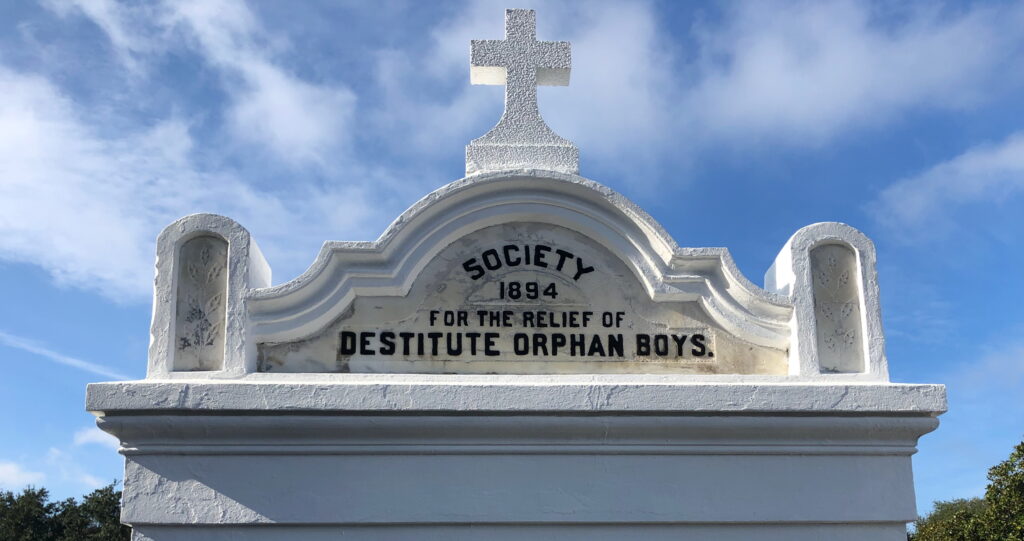
“It’s a sin to kill a mockingbird,” we’re told by Atticus Finch, in the novel title-dropped in that line. Now, think back to your 8th grade self and try to remember why it’s a sin in his opinion. It isn’t because it’s a pretty bird; Atticus says flatly “Shoot all the bluejays you want, if you can hit ʼem”. Anyone remember? It’s because, as Atticus says, they “don’t do one thing but make music for us to enjoy”. They are, in other words, innocent. And the potential execution of an innocent person is what the book and movie are all about. The story is also about rape, racism, rabid animals, murder, an attack after a Halloween pageant, and a creepy recluse in a house named Boo. Despite this, no one would argue that To Kill a Mockingbird is horror story. But it is a prime example of Southern Gothic, a sub-genre that is full of the grotesque, macabre, and often supernatural and which, as we will explore on our journey today, easily slides into full-blown horror.
Welcome to this week’s itinerary, travelers, called Undead Mockingbird. Grab a sweet ice tea with lemon to go because we’re headed south of the Mason-Dixon line to a land where I went to school, twice, on purpose. And it changed me forever.
Before we arrive at the destination that is Southern Gothic Horror we should probably hit a few waypoints for the terms that comprise it. Let’s start with “gothic”, since, as terror tourists, you’ve likely encountered movies that are utterly suffused with gothic ambiance and tropes. Now, unless we’re talking about the extinct Germanic language of the 5th century Goth peoples or trying to describe why you borrowed your sister’s eyeliner to go to the Siouxsie and the Banshees show — neither of which we are talking about — then we’re talking about a style of architecture.
Gothic building design was a European architecture of the 12th to 16th centuries. You’ve seen it: pointed arches instead of curved domes, flying buttresses that meant walls could for the first time do things — like hold stained glass — instead of solely making sure the roof didn’t fall in, and elaborate ornamental stonework of all kinds including, yes, gargoyles. If you can picture Notre Dame in Paris or the Duomo in Milan then you know exactly what Gothic architecture is. Importantly the term “gothic” was originally applied to this form of architecture as an insult. Artists centuries later considered these buildings to be barbarous, monstrous even, precisely because they were so different from the classical curves of the ancient Greeks and Romans that the Renaissance so eagerly sought to revive.
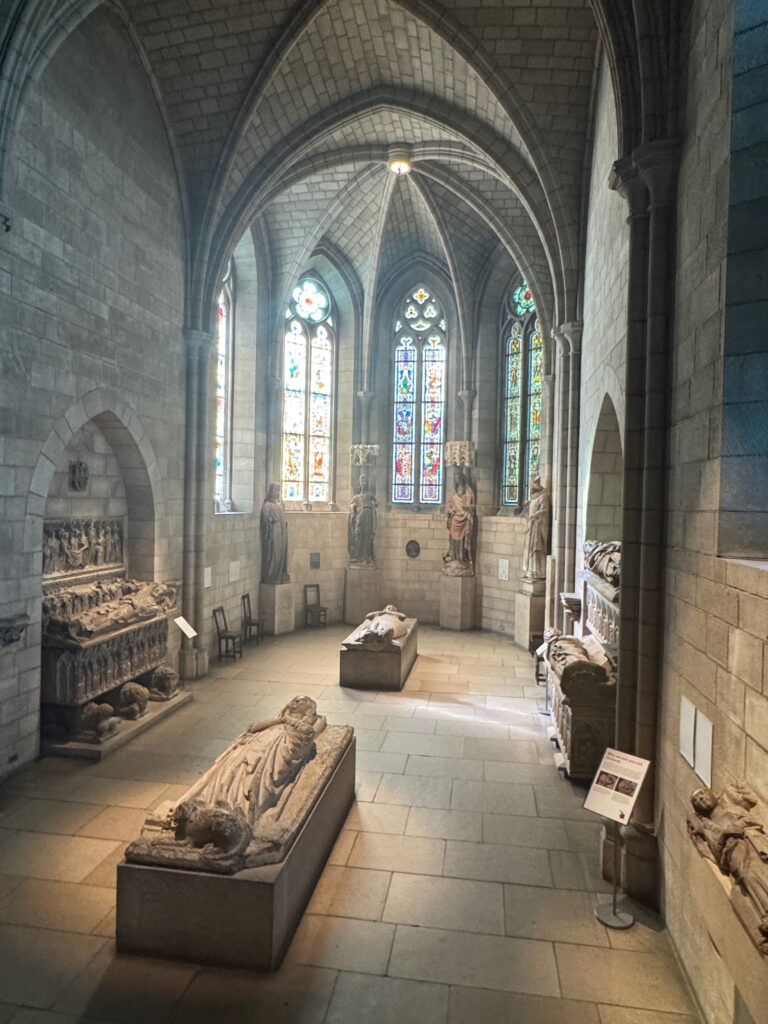
So, the term “gothic” was originally used with contempt. But it was also applied to very old structures, many in states of decay and ruination by the time of the Renaissance. These buildings — many of which were churches — were equal parts beautiful and rotting, isolated and grandiose, and were the primary inspiration for the gothic fiction of the 18th and 19th centuries. Many of these stories, the first of which is The Castle of Otranto by Horace Walpole from 1764, take place in gloomy landscapes and/or outright haunted manors. And the people in these places, well, they tend towards the end of the emotional spectrum where rage, lust, madness, and terror dwell. Think of the tales of Edgar Allen Poe, Bram Stoker, Mary Shelley, Charlotte Brontë, and Oscar Wilde.
Gothic fiction was the beginning of the horror genre as we know it. The aesthetic of mystery, of decay, of the past forcing its way into the present (sometimes supernaturally) so defined what in the West would visually be considered scary that most of the costumes you see today at Halloween are just riffs on old gothic motifs. OK so just glancing back at our map: gothic architecture, specifically the buildings of that style in a state of decay, inspired gothic fiction which itself eventually morphed into the larger category of horror fiction.
So how does Southern Gothic, a distinctly American art form, come from what was primarily a European genre? Where the rotting hulks of churches inspired the gothic authors of Europe, the dilapidation of once-majestic plantation houses in the post-Civil War South became a focal point for authors in America seeking to explore themes of a flawed society trying to rebuild itself. These flaws, often personified by grotesque or mysterious figures (like Boo Radley from To Kill A Mockingbird), usually involve racism, violence, and religious extremism — even hoodoo and voodoo.
The characters in Southern Gothic fiction are often physically or psychologically twisted – shut-ins, freaks, back-woods types and those unable to move forward in tight-knit communities, sometimes too tight. These characters, caricatures really, are usually colored — and color is key in this genre — by the dark events of the past, the violent history of race relations, the resentment of Civil War defeat, the Great Depression and, more recently, the devastation of Hurricane Katrina.
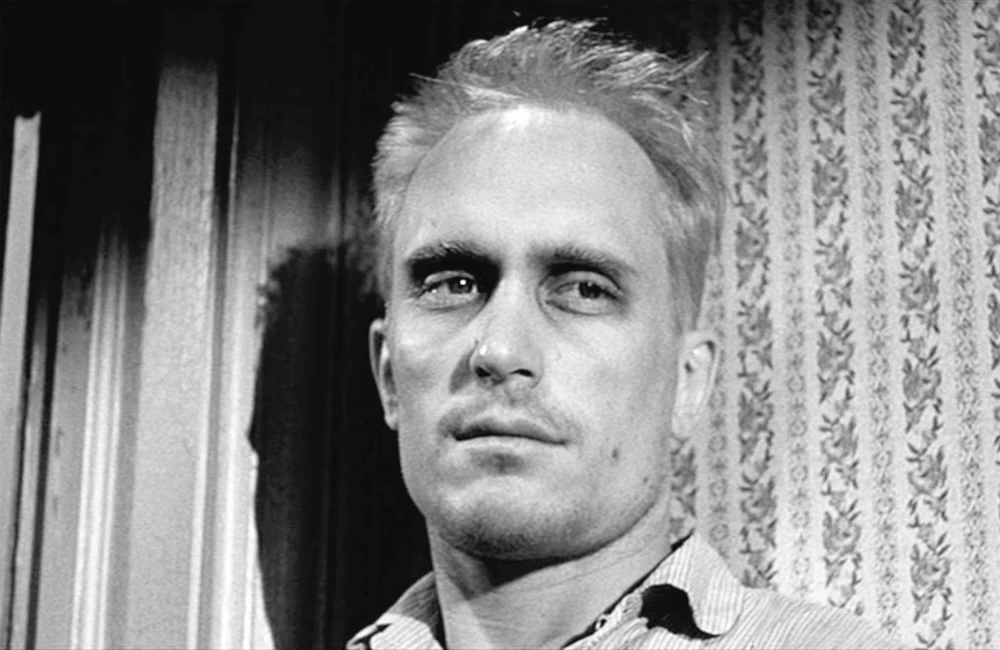
Whether overt or as subtext the point of a Southern Gothic story is to reckon with — if not fully rewrite — the myth that the pre-Civil War south was an idyllic, harmonious, and happy time and place. It is, like gothic literature, an attempt to deal with a society in ruin. Authors who wrote in this style at least some of the time include William Faulkner, Flannery O’Connor, Eudora Welty and more recently Anne Rice and (one of my favorite authors) Donna Tartt.
Tourists, you may see where we’re headed. It is not such a leap from the dark themes of these Southern novelists to straight-up horror: mansions rotting into swamps, snake-handling preachers, and unreconstructed beliefs in the supernatural. Southern Gothic often becomes Southern Gothic horror and nowhere is this more true than at the movies.
Before we talk about films, though, a quick note on genre slippage. Categories are always tricky; what’s the real difference between a dark thriller and a horror movie with a gore score of zero, for example? But in the case of the category of Southern Gothic we’re actually taking about a geographical place, specifically the states of the former Confederacy. There are many films which you might otherwise call Southern Gothic except for their setting in the American Midwest or amongst the hillbillies of Appalachia. And many of these films are wonderful — see especially The Night of the Hunter from 1955 about a serial killer posing as a preacher in West Virginia or the 2017 film 1922 based on the Stephen King novella about murder and guilt on a Nebraska farm. But for now let’s constrain our travels to the South and a few standout films.
Hush…Hush, Sweet Charlotte is a 1964 creep-out starring Bette Davis and Olivia de Havilland as middle-aged cousins in Louisiana attempting to keep the local authorities from demolishing a home in the path of a new interstate. That’d make for a pretty good straight drama, except that Bette is also the primary suspect in the decades-old unsolved murder of her former lover whose decapitated head comes back for a visit. Of note, this film is 133 minutes long and very slow by contemporary pacing standards, but it is a great example of the subgenre.
The masterful director Lucio Fulci wasn’t afraid of trying anything and his film The Beyond from 1981 is his take on Southern Gothic. Filmed on location in and around New Orleans, The Beyond is about a woman, Liza, who inherits and attempts to rehabilitate a crumbling old hotel — which happens to be sitting atop one of the seven gates of hell! This is an exceptional film, part of the Fulci’s Gates of Hell trilogy, one of the UK’s “video nasties”, and did not see an uncut release in the US until 1998. You need to see this film not only because of its contribution to our subject today but because the ending is bleak as all hell — er, as all beyond.
Angel Heart from 1987 is a noir-ish detective tale with a satantic twist. This film partakes of lots of Southern Gothic tropes aesthetically, but does include one we haven’t mentioned yet, the half-crazed war veteran. In this case it’s not a Civil War veteran but an injured WWII solider who’s gone missing. A man named Louis Cyphre, played by De Niro, hires a private investigator named Harry Angel, played by Mickey Rourke, to find the veteran who owes him a debt. It’s a fallen angel tale set amidst the dark, oppressively humid decadence of New Orleans.
And if Big Easy decadence is your thing then you’re likely a fan of the novels of Anne Rice about the vampire Lestat. Interview with the Vampire from 1994 is the big budget film version of the novel of the same name, featuring Tom Cruise, Brad Pitt, Antonio Banderas and a young Kirsten Dunst. Much of the film takes place in antebellum Louisiana with all its Caribbean disease, rotten swamps, wrought iron balconies, and candle-lit passages. It’s ultimately a tale of child murder — or at least, taking the human life from a child — and the grief surrounding this act. But it’s also a very modern take on the visual trappings of southern-inflected horror. I suggest reading the books and skipping the movie, but hey you do you.
If you want the Cliffs Notes version of Southern Gothic have a watch of The Skeleton Key featuring Kate Hudson and John Hurt from 2005. This film contains every possible Southern Gothic trope (or cliche, if you’re feeling critical): a plantation house in the middle of a rural parish in Louisiana, the twisted legacy of a slave lynching, hoodoo rituals, and all the atmosphere of a once-majestic society now covered in a layer of dust. It’s not a perfect film, but it may be the most exemplary of our genre exploration.
Is there such a thing as a Southern Gothic slasher? Indeed there is, my touring pals. It’s called Hatchet from 2006 and features the undead, deformed Victor Crowley who slops through swamps in search of his next victims. In this case it’s a group of tourists (just like us!) stranded in the countryside on a ghost tour out of New Orleans. Hatchet is paint-by-numbers horror — you know exactly what you’re going to get and pretty much exactly where its going, but at the time I enjoyed the fresh setting and I found it fun to see how southern motifs were woven into the scaffolding pulled mostly from 1980s campground horror. There are several more Crowley films after this one, if this is your jam.
A House on the Bayou from 2021, reviewed on this pod previously, is an unexpected entry in the genre, focusing primarily on familial tension over an affair but set in a decaying mansion in the swampy countryside. The family here are outsiders, definitely not southerners, who basically represent us, the viewers, thrust into a world out of time, complete with creepy fellows named Grandpappy who represent the old order, the way things used to be but which definitely shouldn’t be. Great performances and an excellent twist!
Now, you may have noticed something about all these films. I chose them almost randomly — a few I had seen previously, a few I had wanted to see — as exemplars of Southern Gothic horror. But every single one of them is set in Louisiana, often New Orleans. This isn’t coincidence. Louisiana is ground zero for the genre, possibly because it has the most visible legacy of majesty-in-ruin, colliding cultures of decadence and religiosity, diverse peoples mixing uneasily (black and white, high society and low, European and Afro-Caribbean colonizers and immigrants), all stewing in an oppressive climate of bugs, alligators, and slithering creatures.
I haven’t done an exhaustive census, but my guess is that more than half of what you’d consider quintessential Southern Gothic Horror takes place in Louisiana. Yes there are films which do not — of special note is Cape Fear, both the 1962 and 1991 versions, set on the outer banks of North Carolina. But the center of gravity for the genre seems always to be the Deep South. The entire third season of American Horror Story, called Coven, is set amongst the witches of New Orleans, for instance. Of note, my wife is from New Orleans. Is she a southern goth witch? This is an exploration for a possible future installment of The Terror Tourist.
Until then, my compatriots, sorry for the humidity. And the mosquitos. But hey, we enjoyed some lovely sweet ice tea, no? See you on our next journey!
A full list of the movies mentioned above can be found at Letterboxd. Find out where to watch there.
The Terror Tourist is my occasional segment on the Heavy Leather Horror Show, a weekly podcast about all things horror out of Salem, Massachusetts. These segments are also available as an email newsletter. Sign up here, if interested. Here’s the episode containing “Undead Mockingbird”:
End Quote
Prefer to listen to this post?
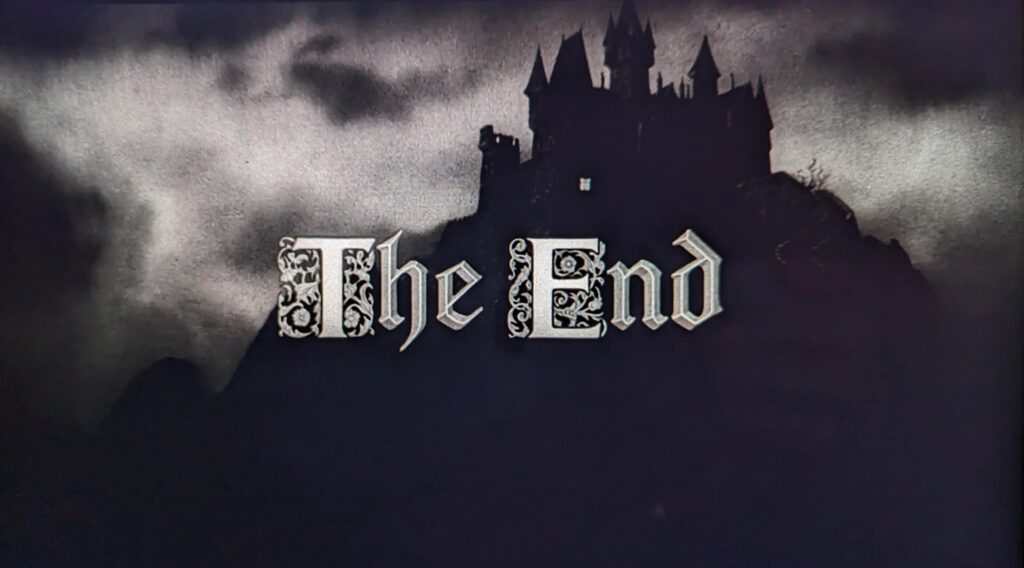
The End. Fin. Game Over.
We begin our journey today, tourists, at the very end. Cliche be damned: it isn’t the journey; it isn’t the people you meet along the way; it’s the destination. And that destination almost always is death. In the horror genre this is obvious — character deaths are usually dramatic fulcrums, sometimes moments of novelty, and often outright astonishing.
But the end in film is so much more powerful than death. We watch movies in part because they end. We know the story is finite and must draw to some conclusion and that conclusion is usually hinted at before we even start. There’s a satisfaction in that, a satisfaction that often eludes us in the real world. Usually we don’t have answers to: How will we end? How will the world end? Are we humans a 90 minute hangout film or a multi-part saga? Do we come back for a sequel?
Welcome to today’s Terror Tourist itinerary called “End Quote”.
Human death is as varied as human life, of course, and is the subject of the vast majority of films across all genres — whether explicit (as in horror) or as a unstated complement or antagonist to the will to live and love (as in romantic comedies). So, yeah, human mortality is the engine of all fiction. But all the different ways people die is an journey too lengthy for us today, travelers.
Instead, let’s consider the end of everything. Apocalypse. Ragnarök. Doomsday. How humans behave in the face of worldwide annihilation is often as dramatically interesting as how they face their own ends. Which is why the theme of apocalypse is everywhere in films — from horror to thrillers to superhero movies to comedy.
When we talk about the apocalypse we usually mean the end of life, specifically. There have been five near-total apocalypses in the history of planet earth. (We discussed the most recent of these — the asteroid that wiped out the dinosaurs — on our Terrible Lizards journey.) Almost all of these near-extinctions were caused by some kind of naturally-induced warming or deoxygenation of the planet. And this is why many scientists believe we are in a sixth extinction event, the only one caused specifically by humans as we have moved carbon safely stored in the ground and have thrown it into the atmosphere, trapping heat and warming our rock beyond the parameters in which life thrives. Fiction, especially in the last decade, has often made the existential threat of climate change its main or at least secondary theme.
But climate change isn’t the only way it all ends. There’s asteroid impact. We know that happens. In 2016 NASA established the Planetary Defense Coordination Office to track potential impact hazards. There are gamma ray bursts coming from far away in the galaxy. This radiation which comes from violently-exploding stars called supernovae would strip away our ozone layer, which I suppose brings us straight back to climate change. Without the sunscreen of ozone life just burns up. Speaking of the sun, that ball of plasma could be our end too — if we make it long enough. As our sun ages and dies it will swell in size and intensity, swallowing Mercury and Venus, irradiating and heating Earth well beyond what life can tolerate. (It may even swallow us whole too before petering out. Impossible to know, but again we’d be long gone before that happened.)
Film sometimes deals with these kinds of natural disaster earthly ends, but more often than not the subject is human-centric apocalypse — most recently viral pandemics. Indeed one way to categorize the history of horror cinema is to look at what threat currently dominates the public imagination. Alien invasion, robots run amok, beasts mutated from atomic radiation, zombies, werewolves, and vampires (which as often as not are stand-ins for some other fear or threat), nuclear annihilation, artificial intelligence that comes to oppose biological intelligence. (We’re about to get a lot of those.)
But what about everything everything. As in the universe itself. Well, compatriots, this is where it gets really weird and little bit scary. There’s a branch of physics that deals with the ultimate fate of the universe. It’s quite a vibrant and not at all morose field of inquiry.

Basically there are four possibilities for how it all ends:
The Big Freeze (also known as Heat Death) is the one that has the most support amongst physicists. We’re coming up on about a century since ol’ Edwin Hubble calculated a cosmological constant which tells us how fast the universe is expanding from the cataclysm that started it all, the Big Bang. And it definitely, provably is expanding (in fact, it’s accelerating which is so bizarre we had to make up an undetected force — dark energy — even to explain it). Everything in the universe seems to be expanding away from everything else as if it all — planets, galaxies, you, me, your cat, that hot dog over there — were all on the surface of a balloon that was expanding. So why is this called the Big Freeze? Well eventually everything will be so far apart that gravitational attraction will no longer bring matter into contact with other matter, so there will be no reactions that give rise to stars. And without stars, well, you get a heat death. The opposite of the Big Bang is indeed a whimper. Dark, cold, and nothing. Everybody dies.
The Big Crunch is the opposite. The idea here is that, yes, everything is expanding, but eventually gravity will win and halt the outward movement. In fact, eventually everything will pull back in closer and closer until it all smooshes down into a dimensionless singularity. Everybody dies.
The Big Bounce is just an endlessly repeating cycle of Big Freezes and Big Crunches, based on the assumption that a dimensionless singularity of all the matter in the universe would then explode (Big Bang-style). This seems to run afoul of quantum mechanics, but the truth is we really have no idea what happened at the very moment of the Big Bang. Everybody dies. Maybe life comes back. But everybody dies again if they do.
Now here’s the scary one: The Big Rip. I mentioned that the universe’s expansion is accelerating and that we don’t really know why. But we do know that the acceleration is constant, which we should be glad for because that constant is just fast enough to expand but not fast enough to destroy local structures like galaxies or stars or us humans. But … technically there’s no reason that the acceleration must stay constant. If it increases (because, for instance, dark matter and dark energy are weirder than we even think) it could be curtains for everything down to individual atoms. The distance between particles themselves would become infinite in a finite amount of time. Riiiiiiiiiiip. The ultimate explosion. Everybody dies.
Apocalypse has been a subject of film since the very beginning. We are lucky to have a restored copy of the Danish film Verdens Undergang (literally “The End of the World”) from 1916. While this is science fiction rather than what we would come to call horror, it definitely points the way. Natural disaster, panic, and general mayhem ensue after a comet passes Earth. And the audience was ready for this having just witnessed Halley’s Comet in 1910 and being in the middle of a world war and global influenza pandemic. Horror movies as a mirror of a society’s fears, even way back at the dawn of movies.
Since then the end of the world has diversified.
You’ve got religious, specifically Christian usually Catholic, apocalypse in films like Legion from 2010, starring Paul Bettany as the Archangel Michael. God has had it up to here with humans and so he sends hordes of angels , including the archangel Michael, to eradicate the human race. Michael goes against God’s willing and finds a pregnant woman in a diner whose child will be the savior of mankind. War ensues. The Archangel Gabriel comes down to battle. I liked this film, especially as it begins with Michael cutting his own wings off to blend in with humans.
Then there’s worldwide apocalypse from the undead. Obviously there are hundreds if not thousands of zombie films but only a minority focus on the zombie infestation as a worldwide phenomenon. I mean, it ain’t an apocalypse if it’s just a few shamblers in your local cemetery. George Romero ultimately produced a series of six films starting with Night of the Living Dead that does slowly show the evolution of a global zombie outbreak. This all concludes in the book The Living Dead completed and published posthumously by Romero’s estate that does a wonderful job of carrying the zombie apocalypse to its logical conclusion (spoiler: all flesh, even undead flesh, rots away to nothing). Other good examples of zombies through a global lens are World War Z from 2013 and the 28 Days Later franchise begun in 2002. (28 Years Later is slated for release next year.)
There’s no lack of pandemic virus movies that wipe out humanity, especially these days. We discussed the movie Black Death on our last Terror Tourist jaunt, but there’s also the under-loved Carriers from 2009 starring Chris Pine early in his career. The pathogen in this film is literally called “The World Ender Virus”. No one seems to be sheltering at home — it’s all a bit of a survivalist wasteland — and really no one wears masks. There’s a serum, but apparently it doesn’t work. Maybe this is where Covid would have ended up if the mortality rate was significantly higher.
Let’s not forget the long tradition of alien monster apocalypse too. I don’t mean films where a single creature comes to earth and wreaks havoc, but actual global infestation. So The Thing is not apocalypse (wonderful though it is), but A Quiet Place (and its sequels) would be. As would Cloverfield and its sequel 10 Cloverfield Lane. (I will not acknowledge that a third Cloverfield film exists.)
Maybe my favorite type of apocalyptic horror is the completely unspecified type. Films that just begin in medias res, with a world already on fire, a color palette that no longer knows Roy G. Biv, and no explanation given whatsoever.Two good examples of this are The Road from 2009 and The Day from 2011. The Road stars Viggo Mortensen, Charlize Theron, and Robert Duvall and is the simple story of a father and son making their way through post-apocalyptic wreckage to the coast of South Carolina. They try to stay away from “bad guys” while the little boy tries to understand the difference between good guys and bad guys in a morally ambiguous world of pure survival. In The Day, we get a ragtag group of survivors (including actor Dominic Monaghan) who come upon a house full of rare supplies in a ruined world. But the food and drink found there is bait and the house is a trap, setting up what becomes a pretty typical though eminently plausible siege movie.
Do these films teach us anything about how we end? Probably not. It’s impossible to know if we’ll take an asteroid to the face or a zombie chomp to the head. But maybe they do show us something, in a very personal way. If there is some apocalyptic event coming it is probably our human propensity for cruelty to one another that will be our undoing. Or selfishness, which is a kind of cruelty. In the end, it probably doesn’t matter what the universe does. What matters is what we do to one another.
And maybe that’s why we are drawn to horror fiction. It’s a glimpse of what we don’t like to dwell on, of how fragile existence really is, skipping to the end of the story to help us understand our current chapter.
OK tourists, let’s end our bummer of a trip here. Go home and hug your family or your pet or your stuffed animal. Hug something and hope the universe doesn’t rip apart.
A full list of the movies mentioned above can be found at Letterboxd. Find out where to watch there.
The Terror Tourist is my occasional segment on the Heavy Leather Horror Show, a weekly podcast about all things horror out of Salem, Massachusetts. These segments are also available as an email newsletter. Sign up here, if interested. Here’s the episode containing “End Quote”:
Here Be Dragons
Prefer to listen to this post?

Whan that Aprille with his shoures soote,
The droghte of March hath perced to the roote,
And bathed every veyne in swich licóur
Of which vertú engendred is the flour;
So begins the Middle English General Prologue of The Canterbury Tales where Geoffrey Chaucer praises the sweet spring rains and the flowers they bring. Whether you consider this collection of stories to be the birth of modern English literature or the death of your will to live in fourth-period high school English 101, it is a quintessential window into the world of medieval Europe.
What you may not know is that it is also the template for the opening of one of the darkest, I’d say even horrific, poems of the 20th century, T.S. Eliot’s The Waste Land from 1922. You’ve probably heard its opening line “April is the cruelest month, breeding / Lilacs out of the dead land …” This is Eliot in the aftermath of World War I and the great influenza pandemic of 1918 reminding us that spring showers also stir up the ground, awakening memories — and things — that might be better left under winter’s numb blanket. It’s easier for a revenant corpse to crawl out of wet earth.
As in The Waste Land the medieval world has informed, colored, and often frightened the present. We love our tales of wizards, dragons, potions, quests, and dungeons. Poems, novels, stageplays, musicals, role-playing games (hey Dungeons & Dragons and Dark Tower!): nearly every modern art form mines the rich ore of the Middle Ages. And cinema is no different, of course. But what about horror cinema, dark cinema? Friends, like pilgrims telling tales on our way to Canterbury, we travel today to a segment called Here Be Dragons.
Medieval and darkness go hand-in-hand. We used to call it The Dark Ages (and many non-historians still do) to distinguish the period from the supposedly gleaming classical world of ancient Greece and Rome and to make ourselves feel good about our supposedly rational, industrialized modern era. This attitude largely came about during the European Renaissance with the widespread rediscovery of the texts of classical antiquity. In the best case, “dark” refers to the relative legitimate lack of historical records during long periods of the 5th through 10th centuries. But mostly it was arrogance: it’s tough to believe you live in an age of enlightenment if you don’t characterize what came before as darkness. Looking at you, Voltaire. Glancing at you, Thomas Jefferson.
The truth is, the medieval period in Europe was anything but dark. It saw the invention of the modern calendar, movable type and the printing press, non-load bearing monumental architecture and stained glass, the modern university, paper money, coffee houses, water and wind mills, illuminated manuscripts (the world’s first multimedia!), all manner of scientific gadgets, the Magna Carta, and Dante’s Divine Comedy — to pick only a few of its brightest spots.
But we’re here to talk about scary things, are we not, terror pilgrims?

Probably the first monsters in a language that would become English come from the epic poem Beowulf, written at the end of the 10th century. Grendel and his even meaner mother are descendants of the biblical Cain (the “first murderer”) and the main baddies — along with a dragon — in Beowulf. It’s a simple story, really. Grendel just doesn’t like fun and merriment. If you’re a Germanic warrior laughing it up with your buddies in the mead hall after a long day on the moors, Grendel is coming to devour you. Beowulf of course has other ideas, killing Grendel with his bare hands, Grendel’s mama with a sword, and the dragon with the help of his buddy. Then Beowulf dies and is immortalized in a poem that would terrorize even more high school students than The Canterbury Tales — and inspire at least eight mediocre films, none of them true horror.
Monsters — especially dragons — figure prominently in the medieval world. As does magic. Both in some ways are methods of dealing with the unknown or the unknowable. Can’t understand the reason all your crops died? A magical curse might explain it. Afraid of the dark reaches of that forest over there? Probably ogres. Have an unexplored area of the vast sea and no real knowledge of what’s there? Just label it hic sunt dracones (“Here be dragons”) because, let’s face it, there are probably dragons there. This preoccupation with the supernatural is the very basis of fantasy, the bedfellow genre of science fiction and horror. But with the scientific method several centuries away — and the notion of fiction itself somewhat foreign to the medieval mind (history and myth were tough to disentangle) — what we mostly take from the Middle Ages is this sense of the fantastic and hoo boy it is often very dark.
There was nothing darker than the big black ink splot that spread out in all map directions from a lake in northeast modern-day Kyrgyzstan. This was The Black Death. Between 1347 and 1351 this pandemic killed nearly 200 million people in Eurasia, leaving putrid swollen corpses stacked like cord wood as far as the eye could see, emptying out towns so completely in some cases they were only rediscovered with the advent of aerial reconnaissance during World War I. “Bring out your dead” indeed!
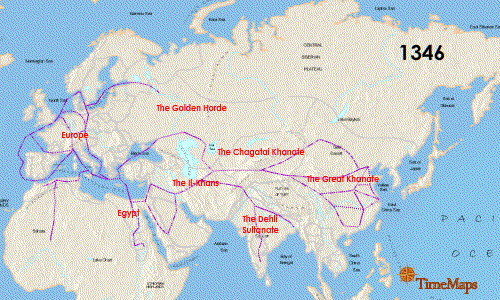
Let’s break down how this killer worked. First there’s the Black Rat, Rattus rattus. These suckers were virile: two black rats mating pretty much continuously for three years could produce three million offspring. They could climb nearly vertical surfaces, survive a fall of five stories, and enter openings a mere ¼” wide. And their jaws could cut through lead. OK gross, but who cares?
Well we care because these rats had fleas, specifically the Rat Flea, Xenopsylla cheopis. This small terror could live for a month even without a host on almost any surface and could jump a 18”. OK gross, but who cares?
We care because these fleas carried the real devilry: the Yersinia pestis bacterium, the actual murderer of 200 million people. This plague bacteria would multiply so ferociously inside fleas’ guts that it would block the digestive tract, hindering a flea’s ability to ingest a meal. Which meant that the dumb flea would just keep biting its target over and over again, regurgitating more bacteria into its host. Yersinia pestis attacks the human lymphatic system, the very castle walls our bodies have built against invading pathogens. But that was just an irony. Victims of the Black Death rarely lived long enough for a secondary infection to finish them off.
Of course, none of this was known in the medieval world. Germ theory did not exist and antibiotics were 600 years in the future.
This triple cheeseburger of death — rat, flea, and bacterium — traveled by over-land trade networks and via advancing armies in the more-than-normally bellicose 14th century. But mostly it traveled by boats plying the Mediterranean and disastrously entering ports like Marseille and Venice. Venice, interestingly, tried to get ahead of the threat by immediately torching ships suspected of carrying plague-infested passengers (not rats — remember they did not know this was the actual payload). Less drastically they would isolate ships and crew for 40 days — or quaranta giorni — which is where we get the modern English word “quarantine”.
So what would actually happen to if you were infected by the black plague? Pretty rapidly you’d develop a stigmata of purple-black swelling in your armpits and the groin (called “bubos” from which we get the term “bubonic” plague). Your lymph nodes would grow so large as to permanently disfigure you, if you somehow survived the infection. (But you’re not gonna survive.) Often the swollen nodes would explode, spewing infected fluid all over. Your last hours would be characterized by bloody vomit, high fever, delirium — an agonizing death. Even before death, infected people would often smell of internal gangrene as their organs started to decay from within. Entire families and neighborhoods would be wiped out in days. And that was the least bad of the three variants of this disease.
Trenches called plague pits were just stacked with corpses until full, then covered with a thin layer of dirt. Heavy rains would often unearth the bodies which would then be feasted upon by rats and dogs, further spreading the bacteria. April really was the cruelest month.

There was no actual way to treat this infection, but people sure tried. Often “doctors” would lance the buboes, draining them, then mixing herbs and human excrement into the wound. This ended poorly in nearly every case. Some sought clean air (believing the disease was airborne). Others went the other route, seeking very noxious air. People would just stick their heads into poop-smeared latrines and fill their lungs. Other supposed cures: drinking non-plague urine, ingesting crushed sapphires, qnd applying flame directly to the skin. This last one — not a ridiculous idea as fleas do not like fire, but there’s the whole burning your own skin thing. And about those plague doctors. The bird-beaked medieval hazmat suits were actually very clever. The thick leather did protect from the fleas and the beaks were filled with herbs and flowers to block the stench of decay. But the doctors saved no one and came to be seen merely as symbols of death. They were often the very last thing a stricken person saw.
Then there were the religious “treatments”. Those who saw the plague as divine retribution for humanity’s sins would parade through the street as flagellants, whipping themselves with ropes studded with hooks. This bloody penance for the pestilence only served as a transmission vector for the disease, of course. You could almost follow the blood-streaked roads that the flagellants marched along to trace the spread of the disease, house to house.
As a sidenote: Poland has the distinction of doing comparatively well during the plague years, mostly because of the institution of an extreme quarantine known as — here’s a great word for you — immurement, literally live entombment — basically bricking someone in, often in their own house, until they died or were clear of the disease. (But also there’s a theory that Poland’s abundance of cats did a number on the bacterium-bearing rats.)
I guess what I’m saying here is, Covid was bad, but it could have been a lot worse. At least we had horror movies to watch during our recent pandemic.
Pilgrims, let’s stop for a moment to rest our beasts of burden, maybe dismount to hoist a flagon of ale, and let me tell you about a few medievally-inspired horror films.
Fans of this show may remember Ken’s birthday pick a few months back, Tombs of the Blind Dead. You really can’t go wrong with this one. Featuring truly scary blind zombie Knights Templar who crawl out their crypts when the sun sets, this 1972 film by Amando de Ossorio (whose last name means alternately “container of bones” or “wolf-hunter” — how badass is that?) is an excellent introduction to the use of medieval setting and lore for a straight-up fright fest. It’s set in the present day with flashbacks to the medieval setting, but the graveyard most of this takes place in might as well be the 14th century.
Let’s go back a little further. 1964 gave us The Masque of the Red Death and The Long Hair of Death, both castle-based costume pieces with very dark themes. The Masque of the Red Death, part of Roger Corman’s octology based on the works of Edgar Allen Poe, features Vincent Price at his most effetely diabolical. Price is Prince Prospero, just a real asshole lord of a castle seemingly immune to the “red death” plague ravaging the countryside. This immunity has been won via a pact with Satan, however. It’s a theme we’ll see again in medieval horror: witchcraft as the only effective deterrent to plague. There are many highlights in this film including a shocking courtly jest that involves dressing a man up as an ape, hoisting him above the masque’d revelers, and burning him alive. WTF Roger Corman? But mainly it’s the spooky personifications of various forms of death, each with its own color, that stand out. Red of course for the immediate plague. Our flea-borne friend black is there, but so is white for Tuberculosis, yellow for Yellow Fever, orange for Scurvy and so on. As the Man in Red tells Prospero near his end, death fears neither God nor Satan. It just is. (As a sidenote, the Poe short story this movie is based on was recently the framework for an episode of Mike Flanagan’s Fall of the House of Usher. It is, in my opinion, one of the best and possibly the goriest. Red death comes to an illegal rave inside an abandoned factory.)
The Long Hair of Death, while not as philosophical as The Masque of the Red Death, makes up for it in Disneyland-esque medieval set design. It features horror icon Barbara Steele as the daughter of a witch burned at the stake; she too is killed by being dumped off a cliff and returns to exact revenge. Classic gothic horror, appropriately in black-and-white. The problem with this movie is that its pacing is as slow as combing through all that long hair of death. 100 minutes is too many minutes of mostly creeping around a castle watching others creep around a castle. Also, somehow I watched a Spanish dub of this Italian film and, while the languages are similar (and of course I had sub-titles turned on), it still was strangely off-putting.
Fast forward to 1992 and Sam Raimi’s Army of Darkness. Say what you will about the weird narrative evolution of the first three Evil Dead movies, you cannot say Raimi aimed low with this one. Except maybe in tone, but then slapstick was woven throughout all the originals. As a plot refresher, the movie picks up directly at the end of Evil Dead II where Ash is somehow whisked from the haunted cabin in the woods back in time to the 14th century with his chainsaw, shotgun, and Oldsmobile. He’s immediately captured, believed to be some sort of warlock and taken inside the castle walls. Instead of the plague being kept at bay outside the castle walls we have the deadites from the first two films. (Yep it’s the ol’ zombies-as-disease metonymy. Classic!) Ash has to retrieve the Necromicon to get back to the present and ends up accidentally summoning an entire army of … darkness. The thing about Army of Darkness is the line it rides between farce and horror, which really is the line ridden by many treatments of the Middle Ages. We laugh at the peoples of the medieval world as dirt-caked idiots or as festooned jesters loping around a court of half-drunk hangers-on. There’s a reason Monty Python and the Holy Grail was so effortlessly funny. Now add Jason and the Argonauts-style skeleton battles. Sounds like an Evil Dead film doesn’t it?
We come now to the actual Black Death … or at least a movie from 2010 called Black Death. Starring Sean Bean, this is the story of a quest to find a village supposedly immune from the plague. Bean plays a Christian soldier sent by the local bishop to bring back the necromancer who is assumed to have made a pact with the devil to secure the village’s immunity. He enlists the help of a young monk who knows the area and who joins the quest secretly looking for his lover. (Monks have needs too!) This is a surprisingly good movie, touching on themes that must have been top of mind to people surrounded by death 700 years ago: What is god in an age of plague? For that matter what is belief in anything? Though it isn’t called out as such — and wouldn’t be proposed for 300 years — what’s really at the center of this film is Pascal’s Wager, the decision theory that plots the existence of god on one axis and belief/disbelief on the other. There are only four outcomes:
- You believe in a god who does not exist. No problem.
- You believe in a god who does exist. Win!
- You do not believe in a god who does not exist. No problem.
- You do not believe in a god who does exist. Uh oh!
There’s only one scenario where you’re truly screwed and this film hinges on that. Plus, spoiler, you get to see Sean Bean drawn-and-quartered on screen. Worth it for that alone!
You know who else comes from the Middle Ages? Our favorite child abductee-turned-impaler-turned-vampire Vlad Dracula! And while most of the hundreds of treatments of Dracula are a mish-mash of semi- or non-historical fabulation, Dracula Untold from 2014 at least attempts to situate the myth in the original medieval history that nursed it. Here we have Vlad, the good-hearted ruler of the vassal state of Wallachia. But he’s up against the Ottoman empire and that’s … a lot. Luckily he’s recently met an ancient vampire in a cave and agrees to be turned and given all the powers that come with that, freeing the old demon in the process. There’s some liberty taken here with received vampire lore (if you don’t drink blood for three days after turning you will revert to your human form — huh?) and a lot of liberty taken with actual history (Vlad did not kill the sultan Mehmed II). But this was a fun flick. More action/adventure than pure horror, but good gore, spooky settings, and some clever touches involving the use of silver. Dracula Untold was intended to retroactively kick off Universal’s interconnected Dark Universe but this was all shelved when Tom Cruise’s The Mummy tanked. (Lesson: don’t put mega-celebrities in horror movies.)
In the end we return to monsters, as close to the themes of Beowulf as I have seen in film. The Head Hunter from 2018 is basically a one-man show of decapitation and alchemy. A warrior who is basically a Viking Nick Offerman lives in a cabin in the woods, mourning the death of his daughter at the hands of a hideous beast, all the while continuing his job as a bounty hunter for the local village. When the horn sounds in town that means it’s time for this guy to trot off to behead another creature. It helps that he has a goopy mixture that heals his wounds somewhat magically. This film starts slow — none of the beheading kills are on-camera, though you see his cabin slowly become a bestial museum of taxidermied heads. And then the monster who murdered his daughter returns and things get good. There’s a super dark twist that rather shocked me out of my brain. Then again, if I were actively thinking of Beowulf while watching this maybe I would not have been as shocked. The Middle Ages, man, they sure were dark.
OK, pilgrims, this is where I leave you. Keep telling your tales. Never stop that really. It’s what separates us humans from beasts. Canterbury is just a couple dozen leagues that-a-way. Give St. Thomas my best. And see you next time on the Terror Tourist!
A full list of the movies mentioned above can be found at Letterboxd. Find out where to watch there.
The Terror Tourist is my occasional segment on the Heavy Leather Horror Show, a weekly podcast about all things horror out of Salem, Massachusetts. These segments are also available as an email newsletter. Sign up here, if interested. Here’s the episode containing “Here Be Dragons”:
Terrible Lizards
The Terror Tourist is my occasional segment on the Heavy Leather Horror Show, a weekly podcast about all things horror out of Salem, Massachusetts. These segments are also available as an email newsletter. Sign up here, if interested.
Tourists, our journey today takes us to a place but also to a time — approximately 66 million years ago. We’re headed to a day, actually — the most horrifying and deadly single day in the history of life on our planet. Grab your snacks and lots of water. If you have a Kevlar body suit, pack that too. OK let’s go!
We are off the coast of Mexico, just to the northwest of a small fishing village called Chicxulub on the Yucatán peninsula. It is the end of the Age of Reptiles. Humans do not exist yet and won’t for 65 million years or so.
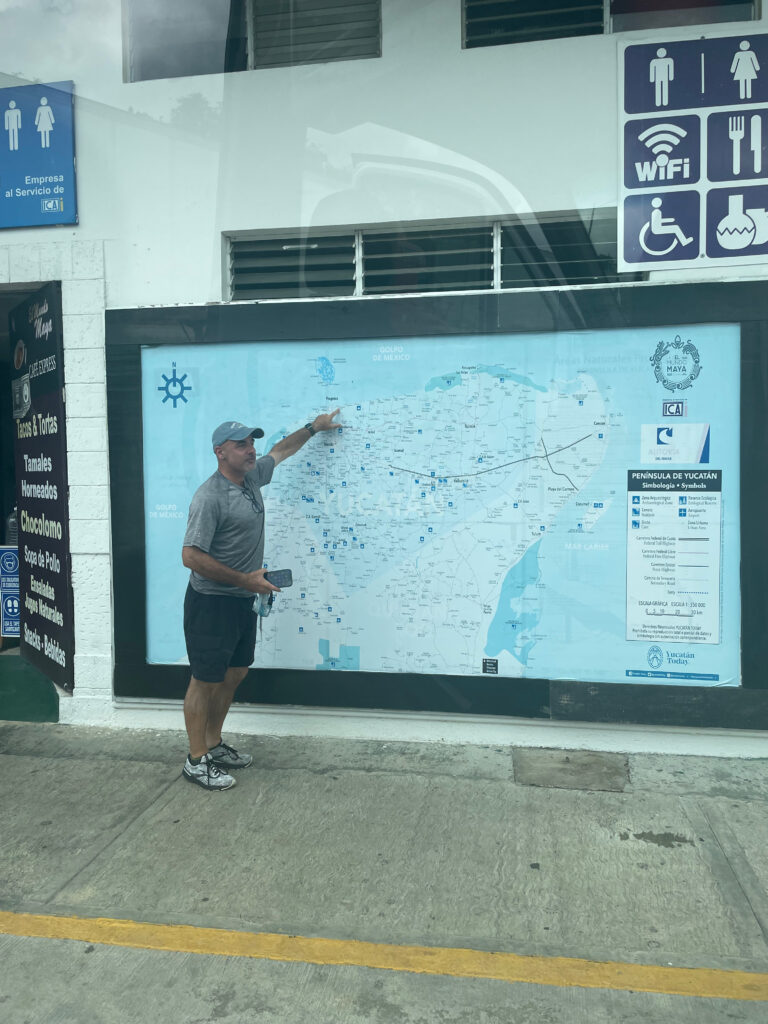
Dinosaurs dominate every continent of Earth and have for several hundred million years. Some of the most popular dinosaurs in our current public imagination are here now — T. Rex, Triceratops, Ankylosaurs (the armored ones), Pachycelphalosaurs (the one with the giant ramming dome on its head), and Velociraptors. They are all around us, whether we see them or not; they see us.
We look up and a light appears in the northeast sky. It’s becoming larger and larger by the minute. It’s a meteor — a chunk of the early solar system that just happens to be on a collision course with Earth. Meteors had collided with earth before and will again, but this time the chunk is large (more than 6 miles across) and fast (traveling at about 12 miles per second). In the blink of an eye the meteor slams into the shallow ocean with the energy of 72 trillion tons of dynamite.
All horror, fictional or real, pales in comparison to what comes next.
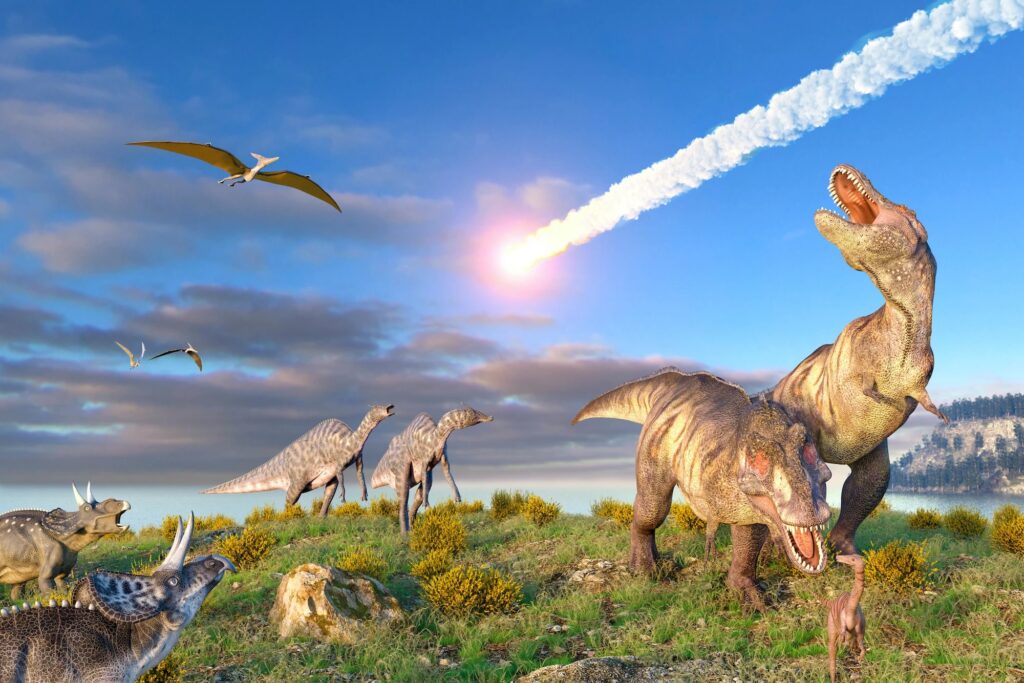
Everything within 100 miles of the impact is instantly vaporized. Life anywhere within 1000 miles of the impact zone is destroyed only slightly less quickly by 620 mph winds, 330’ tall mega-tsunamis, and earthquakes whose magnitude would not even register on our current Richter scale. Dinosaurs here are the lucky dead.
The impact ejects 25 trillion tons of sea floor into the atmosphere. Hot dust, ash, steam, and rock are tossed so high that some achieve escape velocity and scatter throughout the solar system (giving rise to the not entirely implausible theory that there could be dinosaur fossils or even mummified body parts on the moon). But most of that 25 trillion tons of junk falls back to earth, heating to molten temperatures on re-entry. And this is where the real hell on earth begins.
The infrared radiation and heat generated by all this returning material cooks the air globally (our planet’s rotation spreading the heat evenly like a giant earth-sized rotisserie). The air itself is on fire. Basically if you are a living creature and you can not burrow deep into the earth or dive deep underwater you are incinerated by the scorching air. And let’s face it, most dinosaurs are large and not adapted for digging or submersion. Wildfires ignite — only further raising ambient temperatures. This happens all in the course of the first day, nearly everywhere on earth.
Some life survived, obviously, or we wouldn’t be here as tourists. But even most of the initial survivors would eventually perish. All the smoke from those fires only adds to the carbon-rich gunk that is now lodged in the high atmosphere, creating a years-long “impact winter” that basically blots out the sun permanently. Photosynthesis stops so plant life ceases. Without any food herbivorous creatures die. Then any carnivores which eat the herbivores die. In the end 75% of all life on earth is wiped out. A few of our ancestors, tiny burrowing mammals, thankfully make it past this extinction boundary and here were are, ready to talk about dinosaurs in horror movies.
Today’s itinerary is called Terrible Lizards, the literal meaning of the word “dinosaur”.
Dinosaurs are perfect for the big screen in so many ways. They are, of course, some of the largest creatures ever to inhabit the earth. But they also fascinate because of the length of their dominance atop the food chain — and their cataclysmic demise. But most of all apex dinosaur predators are scary. There’s a reason the T. Rex’s arms were so laughably tiny. With a neck so strong and teeth so long the head was all that’s needed to do what a T. Rex does so well: rip its prey apart.
Cinemagenic and terrifying! So obviously there are hundreds of dinosaur-based horror movies, right? I am here to regretfully inform you, fellow travelers, that the answer is no, no there are not. Dinosaur horror, such as it exists, seems to bend toward action-adventure, thrillers and even comedy. There are very few straight-up horror movies involving dinosaurs.
Certainly creature features owe much of their power to our culture’s knowledge and latent fear of dinosaurs. From the Black Lagoon to Godzilla reptilian predators have been a staple of horror and horror-adjacent films for almost a century. But these baddies are almost always not quite dinosaurs. Take the Sleestaks from the television show Land of the Lost: reptilian, sure, but also humanoid and even insectoid with their giant unblinking eyes. Are they scary? This tour guide child of the 80s is here to say: you bet they are. Are they dinosaurs? Not really. The Loch Ness monster — centerpiece of at least one not-great group watch on this show — is, if anything, a plesiosaur. We won’t get into it here, but these large marine reptiles are not dinosaurs, frightful though they are. The Megalodon? Not a dinosaur either.
And yet, dinosaurs have been the subject of filmmaking almost as long as it’s been a medium. From their first depiction in 1905’s Prehistoric Peeps to the seminal model animation of 1925’s The Lost World up through the 1993 blockbuster Jurassic Park, dinosaur films are a massive part of the history of cinema. There’s even a dinosaur museum in the middle-of-nowhere Utah called, uh, The Dinosaur Museum, with a truly impressive permanent exhibition on the history of dinosaurs in film, including a physical recreation of how stop-motion and forced perspective were used to achieve their presence in early film. If you’re ever in Blanding, Utah you should visit.
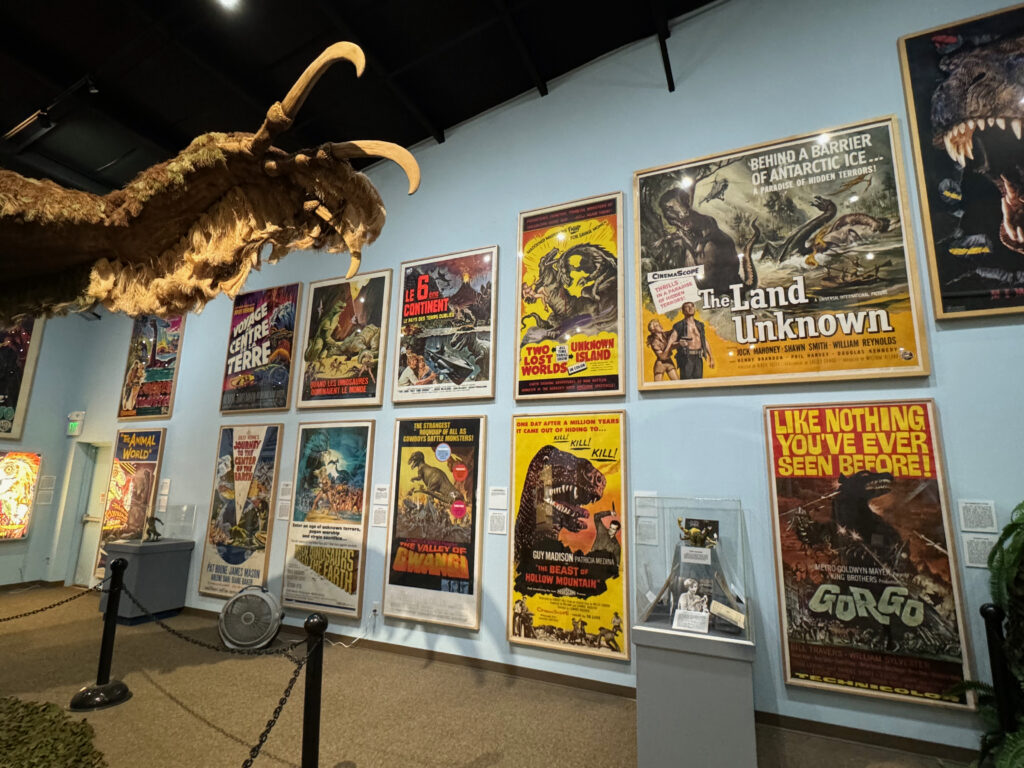
So why so few true horror movies with dinosaurs? I have a few ideas.
- The size and complexity of dinosaurs make them difficult to portray convincingly. Doing so requires ample budget, something our beloved genre often lacks. For much of movie history the technology to portray dinosaurs well simply did not exist widely. Claymation and stop-motion only go so far.
- Dinosaurs are not great villains. Big and reptilian doesn’t automatically mean scary. Many dinosaurs just munched on treetops. Even the Rex and raptor were just doing their thing, looking for prey — like a lion or a wolf. They wanna eat, that’s their motive. Concerning if you’re a delectable human, sure, but not horrifying.
- Related to this is that many people grow up loving dinosaurs. They are a staple of children’s programming. Many people have a favorite dino. Few children have a favorite serial killer or zombie. Those who do grow up and participate in podcasts about like this one.
So, yeah, almost zero horror movies involve dinosaurs. Almost, because there are plenty that attempt it, but they are never played completely straight. Or, the terror is not sustained for the entire film. The original Jurassic Park is a great example. The scenes of running from a rampaging T. Rex or hiding from door-handle-operating Velociraptors is without question frightening. But this is the punctuation rather than the grammar of the film. (It could also be the music.) And we may have Jurassic Park to blame for the relative crap that exists today calling itself dinosaur horror. That movie’s advances in CGI inspired legions of filmmakers to pop dinosaurs into situations that would otherwise have been cost-prohibitive. But without a blockbuster Hollywood budget nearly all these films become laughable the moment the CGIsaurus appears.
Let’s visit a few of these films, my tourist friends.
1993 wasn’t only the year of Jurassic Park. It was also the year of Jurassic Park knock-offs. Enter our man Roger Corman. His film, Carnosaur, was meant to directly compete with and capitalize on the marketing machine behind Spielberg’s film. Roger Ebert called it the worst film of 1993. It’s probably the best dinosaur horror film I have seen. Make of those two statements what you will. Featuring Diane Ladd and a young Clint Howard, Carnosaur’s main plot point is the use of infected chicken eggs, which contain a lethal virus that impregnates women with dinosaur embryos, to exterminate the planet of humans and repopulate it with dinosaurs. There are, alas, almost more chickens in this film than dinosaurs. And being a Corman flick the actual dinosaur effects here are all puppets and animatronics — not horrible for what they are, but still pretty bad. Ironically, Carnosaur gets the science a bit more right than even Jurassic Park. The main baddie is a Deinonychus, a more accurate depiction than Jurassic Park’s Velociraptor which is in actuality is the size of a turkey, partially feathered, and did not hunt in packs, but it has a cooler name. The climatic battle between a T. Rex and a guy operating a front loader is straight out of Aliens. Carnosaur spawned four sequels/knock-offs, almost all using the same models and/or footage from the original because … Roger Corman.
One year later in 1994 we get perhaps the strangest entry in this tiny sub-genre, Tammy and the T-Rex. This film answers the obvious question: what if Frankenstein but with a dinosaur and set in a high school? Featuring Denise Richards and Paul Walker, Tammy and the T-Rex is about a teenager killed by bullies whose brain is then implanted in a robotic Tyrannosaurus rex by a mad scientist. The bullies get their due, naturally, at the disproportionately small hands of this cyborg Tyrannosaur. This is a bizarre movie, but it’s fun and absolutely not something you’ve seen before. In 2019 Vinegar Syndrome restored much of the original, intended gore removed upon release. Find that one for the full experience.
Hands-down the winner for best title in all of dinosaur horror is 2017’s The VelociPastor. You know what you’re in for even just seeing the title in print as the P in “velocipastor” is intercapped uppercase to make absolutely certain you understand the play on words. The VelociPastor is many things, but subtle isn’t one of them. Because none of it makes any sense whatsoever I’ll just lay it all out as a sequence of words: distraught priest being pursued by ninjas finds an enchanted artifact that turns him into a dragon (which is really a dinosaur) who then sets about killing criminals with the assistance of his prostitute sidekick. For what it is, this movie succeeds. And what is it exactly? A $36,000 film that uses an actual discarded high school dinosaur mascot costume for its protagonist. There’s even a scene of a car explosion where no car explodes and a caption reads [insert VFX here]. Sometimes when you have a title this good the movie it’s attached to doesn’t actually matter.
Claw from 2021 seemed promising, as it is built on classic horror tropes. A stand-up comedian and her agent are driving through the American west and have car trouble. They end up stranded in a “ghost town”, one of dozens of tourist attractions that prop up the facades of buildings from a forgotten past. Good start, yeah? They meet the proprietor of the ghost town, a gent named Ray, who also collects dinosaur fossils. Turns out there’s a living raptor on the property as well — we’re never told how or why — and almost the entirety of the remainder of the film is just an extended scene of the protagonists hiding from the beast in and around a camper trailer. But wait, there’s almost a one-year-later epilogue that involves a dream sequence and a T. Rex nowhere near the ghost town. Claw goes to show that the pieces to make real dinosaur horror exist, it just didn’t put them together very well.
I could go on, but you deserve better than all this, my travel buddies. If you need more for some reason, just search any film database for the word “Rex”. Ebola Rex, Poseidon Rex, Anonymous Rex, Theodore Rex. All lizards, all terrible. Dinosaur Prison, The Dinosaur Project, Hatched, Area 407, and last year’s 65 with Adam Driver. Not worth your time or, frankly, worth the legacy of the amazing creatures they depict.
If this is your thing, my recommendation is to go back earlier — discard some of your need for pure horror — and watch more sci-fi entries like Dinosaurus (1960), Valley of the Gwangi (1969), The Land that Time Forgot (1974), or Planet of the Dinosaurs (1977). These aren’t masterpieces but they aren’t parodies either. Best of all: zero bad CGI.
And if you are a filmmaker this is your opportunity. Which one of you will make the first truly great dinosaur horror film? We have the technology and the more science teaches us about dinos the more novel story lines abound. Let me leave you with two ideas, royalty-free:
- For real-world crazy, creationists can’t be beat. Did you know that one of the centerpieces of their belief is that dinosaurs and humans existed side-by-side? There’s even a museum in Texas that purports to show early human footprints next to dinosaur tracks. This is of course complete bullshit, but … what about a horror movie that somehow plops creationists into the world 66 million years ago? They look for fellow humans, find none, are hunted by dinosaurs, and ultimately take a giant meteor to the face. I’d watch that.
- Fossil hunting itself presents plenty of great opportunities for horror. There’s secrecy about and danger all around the dig sites (super hot, dangerously dry, poachers, snakes, bears, etc) and tons of potentially lethal digging and blasting equipment. Someone give me a serial killer paleontologist. Living dinosaurs not even required!
OK everyone, I’ll leave you here. Don’t forget to tip your tour guide. We look forward to seeing you on our next journey.
A full list of the movies mentioned above can be found at Letterboxd. Find out where to watch there.
Land of Fire and Ice
The Terror Tourist is my occasional segment on the Heavy Leather Horror Show, a weekly podcast about all things horror out of Salem, Massachusetts. These segments are also available as an email newsletter. Sign up here, if interested.
Greetings travelers! I hope you are prepared for an adventure — properly dressed in layers, extremities covered, feet shod in crampons — because we are going to Iceland. I’ve compiled an itinerary by watching every horror movie ever to come out of this small island nation. But before we take that excursion let’s pack our bags with some context.

Iceland is Hawaii upside-down, a largely self-contained ecosystem in the middle of a vast sea perpetually remaking itself directly above a hotspot vent in the Earth’s mantle. Like Hawaii Iceland has been a prize of sea-going conquerors through history: the Vikings of course, but also the kings of Norway and Denmark, and even the occupying forces of Britain and the USA during World War II.
Both geologically and culturally Iceland straddles North America and Eurasia. In addition to being the morphing volcanic crown of the mid-Atlantic, Iceland exists right on the boundary of two tectonic plates, just kissing the southernmost boundary of the arctic circle, and slowly moving away from their one-time embrace. This position between two worlds enabled Icelander Leif Erikson to discover what would come to be called North America 500 years before Christopher Columbus — though Leif and his compatriots left behind only tool shards rather than genocidal European pathogens.
Icelanders know how to live between worlds. For example, some 35% of people in Iceland believe in elves. Called Huldufólk, these “hidden people” appear human but live in a parallel world overlaid on our own, popping in and out of our reality at will. How can you tell them from us? It’s subtle. Huldufólk have a convex rather than concave philtrum below their noses. So, yes, I spent much of my recent trip to Iceland staring intently at people’s upper lips. Awkward and uncomfortable for all parties involved, but this is my responsibility as the director of this terror travel agency.
Iceland hosts all kinds of supernatural creatures, most of which you will find in their amazing literary legacy known as the sagas. Part history, part genealogy, part mythology, these tales are unique to Iceland and date to the 9th through early 11th centuries. If interested look up Snorri Sturluson, Iceland’s revered national poet and historian. Actually just say his name — Snorri Sturluson — and feel a smile come to your face.
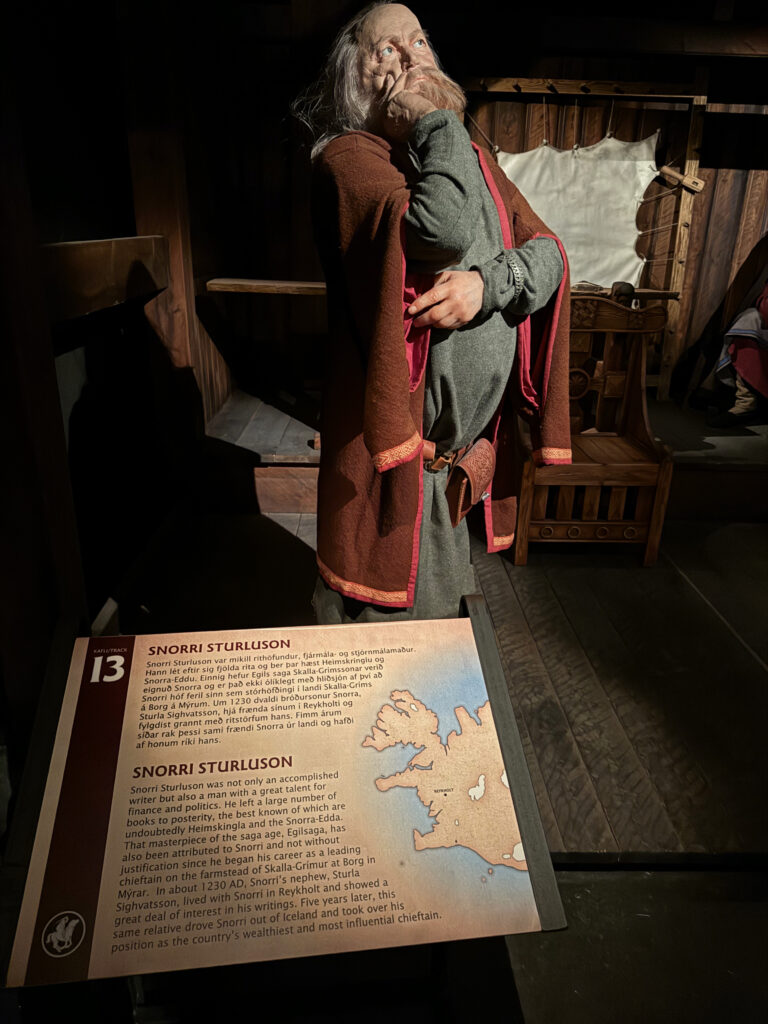
The sagas feature draugr what we’d call “ghosts”, the aptrganga literally “again-walkers”, the haugbúi literally “mound-dwellers” as well as trolls, giants, witches, sorcerers, and devils. All of these nightmares fall into the category of reimleikar or “hauntings”. Interestingly what often gets translated as “ghosts” in Iceland are actually corporeal. These things have physical bodies and can do physical harm. There’s also the legend of the Útburður — literally the “out-carried”, babies left outside to die of exposure — unwanted because of rape, incest, or conception out of wedlock who return as ghosts. That one kinda messed me up.
So you pause here with me on our journey, travelers, and ask the obvious question: Are all the scary things in Iceland fantastical? Aren’t there any humans to be feared? The answer is: not really. Iceland is consistently ranked the #1 safest country in the world. (The USA comes in a 131 out of 163.) And there is honest-to-Odin only a single known serial killer in all of Icelandic history. In the late 16th century a farmer named Axlar-Björn was convicted of killing 9 people, mostly boarders and farmhands, variously by axing them to death or drowning them. He likely killed more than 9 as a search of his farmlands yielded many more bodies. Ol’ Axlar was executed for these crimes by first having his limbs shattered with a sledgehammer, then his privates severed and tossed to his pregnant wife, then he was beheaded and dismembered — each severed body piece receiving its own display on a stake. His children weren’t much better people, frankly. Years later the last words of his son who was being executed for robbery and murder were “If I were free I would kill you all and eat your flesh.”
But honestly other than that particular family, there isn’t much to be afraid of in Iceland … except Iceland itself. That is, literally, the ice and the land.
Let’s start with the darkness. Like all places as far north (or south) as Iceland much of the year is very dark. The sun barely peeks above the horizon in the winter. It’s a gloomy vibe, not quite pitch, but certainly unsettling — like a permanent eclipse. As a sidenote, this seasonal darkness may explain why Iceland and Finland have the highest percentage of metal bands per capita in the world. And not just Viking metal. This is perhaps obvious if you have ever tried to pronounce an Icelandic word as basically every other term in an Icelandic dictionary would make a great black metal band name. And Iceland officially does not allow foreign terms in its language. So when a new concept emerges, like the computer did in the 1940s they make one up. In this example, they joined the term for number (tala) and witch-doctor or prophetess (völva) A computer is thus a number witch-doctor and the new word is … Tölva. Which is my last name. I am, unfortunately, 0% Icelandic.
But let’s get back on the path. Iceland is called the land of fire and ice and that’s no marketing slogan. Well, actually it is, but it is for truth. There are more than 30 active volcanos ripping their own scabs from the land. At any given time quite a few of these are actively spewing lava or scalding mud and ash. In fact, when I was there a few weeks ago we witnessed a crater field which had been dormant for a few months fissure and begin erupting right before our eyes. Icelanders live with this peril, indeed embrace it as the source of many good things, but not incautiously so.
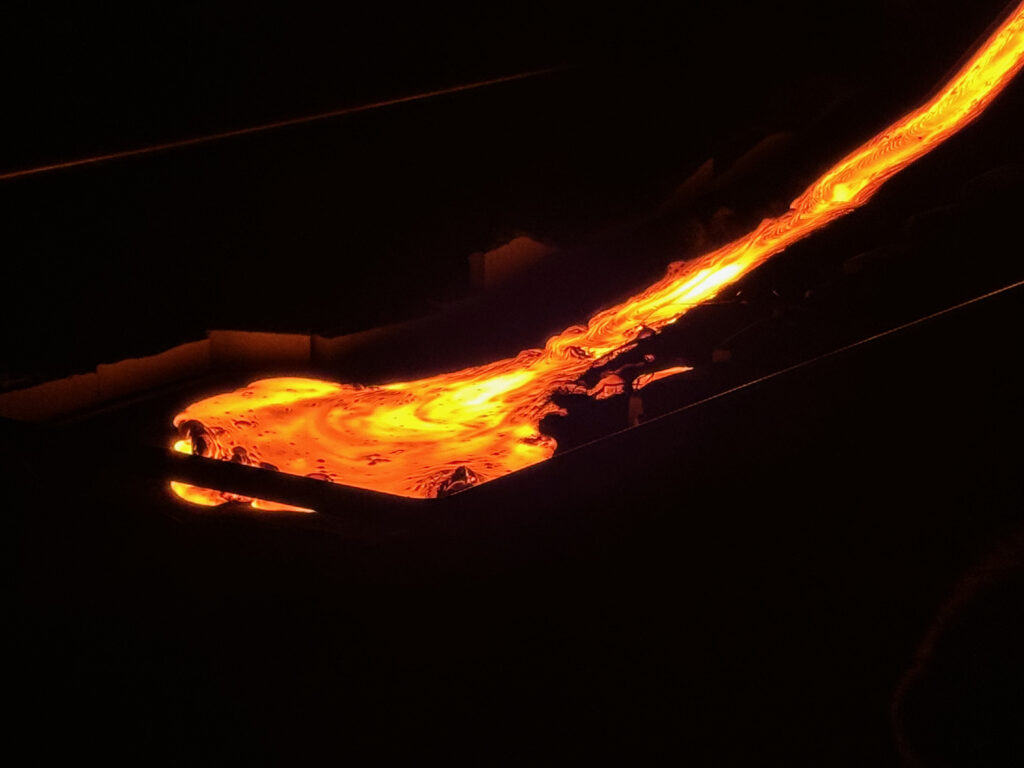
In fact what worries Icelanders more than volcanos is what sits on top of them, which is usually glaciers. We all know that our planet’s glaciers are melting at a worrying rate, but detonate a geothermal bomb underneath them and, well, they melt really quickly. In an eruption all that molten rock and ash mixed with millions of cubic acres of now-melted ice cap hastily seeking lower ground will ruin your day right quick. And Iceland’s biggest city Reykjavik sits on one of the most volcanically active peninsulas of the entire island. Iceland would not exist without vulcanism and one day, hopefully later rather than sooner, it will likely cease to exist because of vulcanism.
Then there’s the sea itself. The North Atlantic is an angry place. Got an unsinkable ocean liner? It’ll take care of that. The waters are rough, rogue waves are commonplace, the whole thing is plied by an unruly fleet of icebergs constantly calving off from increasingly-unstable glaciers, and the water, naturally, is freezing. Typically if you find yourself bobbing in said water you will live as many minutes as the number of degrees celsius the water is above freezing. So let’s say you were lucky enough to spill over into a warm patch of ocean, say 5°C/40°F, you’d live for approximately 5 minutes. As a darkly humorous aside, there is a huge culture of swimming pools (indoor obviously) in Iceland. This is a legacy of a realization in the early 20th century than an above-average number of sailors were drowning due to incidents just offshore that otherwise would have been close enough to swim to safety. Thus Iceland made it mandatory — which it is to this day — to be able to swim. It’s part of childhood educational curriculum. I pause to wonder why the people of a nation literally surrounded by the ocean, criss-crossed by waterfalls, and in a constant state of glacial melt sogginess wouldn’t have previously thought knowing how to swim was important, but who am I to say?
One last way that Iceland wants to kill you. All the aforementioned geological instability produces a lot of earthquakes. No need to delve into that particular kind of calamity except to note that Iceland is one of the only places on earth where there is a non-zero chance of being crushed by tectonic plates underwater. The Silfra Fissure in beautiful Thingvellir National Park is a glacial lake that straddles the cleft made as the North American and Eurasian continental plates slowly move apart. It’s a popular snorkeling and diving site where you can touch both plates at once. And if there’s an earthquake while you’re down there, welp, that’d be a pretty great way to go, no? Reclaimed by earth itself. And yes, it was cold in that drink: 35°F. If not for our drysuits my son and I would have spent our last 1.5 minutes together.
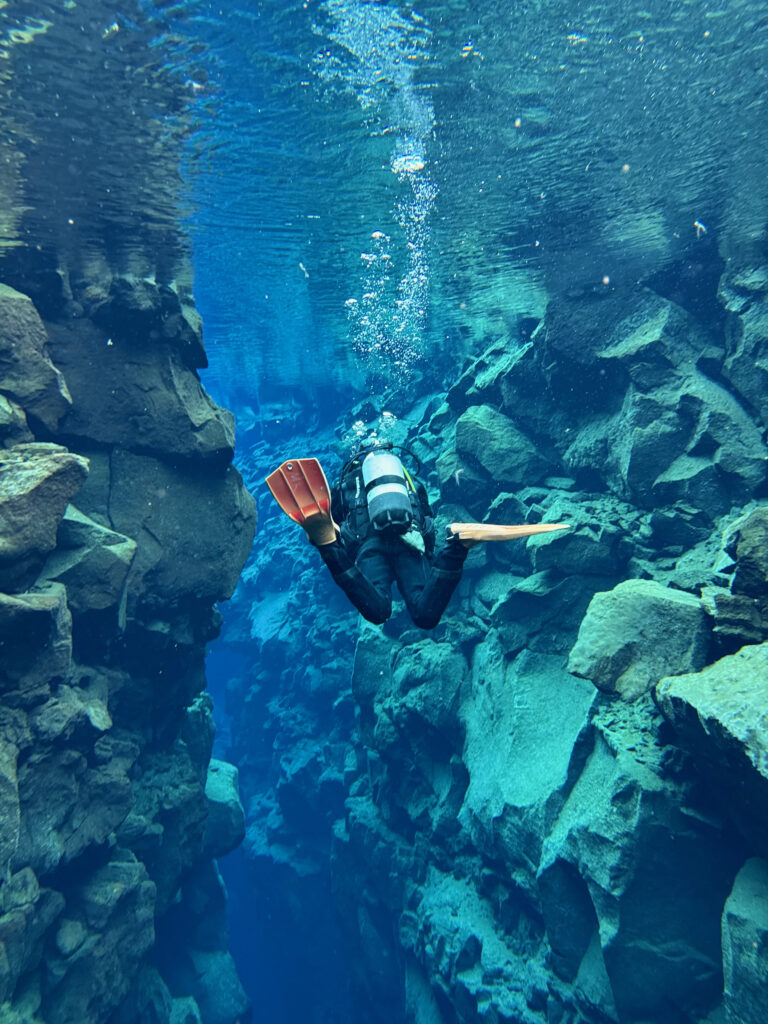
OK let’s catch our breath on this hike. In and out. In and out. We’re warm, we’re dry, nothing is erupting on us, let’s move on … to horror movies.
Here’s the thing. Given the landscape, Iceland seems like the perfect place for the horror imagination to run wild. Match a hostile environment with centuries of ghost storytelling tradition and the fact that it’s exceedingly easy to become isolated in such an unpopulated place. But honestly horror just isn’t a huge genre in Icelandic cinema. This may simply be due to size. Iceland just doesn’t produce as many movies as, say, the much larger, much more populous countries of Sweden or Norway.
But this is an opportunity for our itinerary, my weary travel buddies! It occurred to me that I might be able to watch the entire output of a single country’s horror film industry. And that’s exactly what I attempted to do over the last few months. Did I succeed? Well … I watched 11 films, but there are a few festival-only shorts, made-for-TV specials that were never rebroadcast or put online, and at least one film which does not exist with any subtitles or dubbing. So, no, I did not see everything. But I saw almost everything and certainly the best things.
First a note on Jóhann Jóhannsson, the peerless Icelandic composer. (His albums Englabörn, IBM 1401, and Fordlandia will change your conception of what classical music can do.) For our purposes though it should be noted that Jóhann wrote the music for the 2018 revenge bloodbath Mandy. It was his final work prior to dying of heart failure at the age of 48. If you’ve seen Mandy you know how crazy its score is. Panos Cosmatos, Mandy’s director, said of Jóhann “[he] went above and beyond, and I suspect to the limits of his sanity, to make the music for this movie.” Growing up surrounded by Iceland’s black metal music scene and having seen and loved Cosmatos’ previous film Beyond the Black Rainbow, Jóhannsson reportedly pled his case for the job saying “Holy shit, you guys are making something … that is in this nightmarish, psychedelic metal world that I was born and bred on”. Cosmatos hired him and said “I basically wanted it to feel a little bit like a disintegrated rock opera, and Jóhann responded to that. We developed a kind of shorthand almost immediately.” The movie was made, Jóhann died tragically, and now Cosmatos says he cannot bring himself to revisit the soundtrack. “I’m almost afraid to listen to it in isolation, because I still have emotional strands attached to it.” Have a rewatch — or more specifically a re-listen — of Mandy if you want to get a real flavor of Icelandic horror genius.
These 11 films are representative both of the thematic diversity of Icelandic horror and in various ways are uniquely Icelandic. Here we go!
Reykjavik Whale Watching Massacre (aka Harpoon, 2019)
This splatter shlock features a cameo from Iceland’s most famous — perhaps only legitimate — horror movie celebrity: Gunnar Hansen. That’s right: Leatherface. (Gunnar’s family moved to the USA when he was 5-years-old and the rest is history.) In this movie I learned that there are good reasons Leatherface was non-verbal in the original film only some of which have to do with the story itself. Hansen is just not a good actor. The plot finds a group of tourists stranded on a malfunctioning whale-watching boat who are picked up by a bunch of homicidal whalers running what amounts to a floating torture chamber. The whole thing is weirdly xenophobic with lots of uncomfortable stereotypes about the different nations of the tourists. There are some decent kills, including with harpoons, but this movie goes on for a least one act too many. It was already overly-long when it occurred to me that I, the viewer, had not seen a single whale. Fear not: stock footage to the rescue! There is indeed one kill from an orca. If this were shot on film you could probably see where this scene was stapled onto the existing celluloid reel.
Tilbury (1987)
This made-for-TV movie is classic WTF-did-I-just-watch? Based on the folk belief in a tame imp called a Tilbury which would suck milk from other people’s cows, return to its owner (almost always a woman), and then disgorge butter for her. When not stealing milk for re-processing the Tilbury feeds from a nipple inside its owner’s thigh. Oh and these imps are brought to life using communion wine served between its owner’s breasts. With that all as preface, it’s no surprise that this the visuals in this movie are vile. The story follows a modern day Tilbury conscripted into the British occupying forces during WWII.
Thirst (2019)
Billed as “MOST BAD-ASS GAY VAMPIRE ZOMBIE SPLATTER MOVIE YOU’LL EVER SEE…EVER”. Not four minutes into this film — which I’ll note that I watched on an airplane — we get screaming, gory vampire fellatio. This is so not a movie to watch on an airplane, certainly not with strangers next to you. It basically follows an elderly vampire who kills by ripping his victims’ penises off. Clearly this is done for comedic effect. At one point he even eats a penis in a hot dog bun. Not surprising when you consider that a top ten tourist attraction in Reykjavik is the Iceland Phallological Museum — a gallery of preserved penises and penis ephemera from various species. Thirst itself is a decent film and super gory, particularly a scene when a person is ripped in half top to bottom with the vampire’s bare hands in the snow. It’s part detective story, part commentary on Christian cults. But mostly it’s just goofy fun.
Lamb (2021)
Maybe the best movie I watched on this journey. It’s quintessential folk horror and apparently the highest grossing Icelandic film (of any genre) to date. Featuring Noomi Rapace who you may have first seen in Prometheus. Set on a farm in rural Iceland the style is ultra-realistic, beautiful and minimal, with no soundtrack. Noomi and her husband nurse an ill, hybrid newborn lamb to health, keeping it indoors, nursing it with a bottle, swaddling it to sleep in a bassinet. Hybrid you say? Yeah, it’s half human, but not like a centaur, just some of its limbs. It is bipedal though which is disturbing enough having a toddler with a lamb head running around the house. The lamb’s mother keeps showing up looking for it. Noomi has grown attached to her new “baby” so she kills and buries the mother lamb. This turns out to be a very bad idea. An excellent movie, but don’t expect to leave this movie with a warm fuzzy feeling.
Graves & Bones (2016)
This film is partially a response to the financial crisis of 2008 which hit Iceland abnormally hard — three banks failed, the largest economic trauma to any country relative to size. It opens with a little girl, Perla, stopping the swaying of someone we later find out was her father who has hanged himself. Gunnar is awaiting the decision on his appeal of a conviction for financial fraud — it was Gunnar’s brother, also connected to the fraud, who hanged himself, Perla his daughter. Gunnar and his wife head to a country house to assume responsibility for their now-orphaned niece. It’s a ghost house, of course, but more than that this is a movie about a marriage falling apart over grief — and an external financial crisis — which manifests in horrific ways. The juxtaposition of martial strife bordering on combat and elements of the supernatural are surprisingly effective and affective — it was tough to watch. Eventually you learn the backstory of the house and it all crescendos into a satisfying if bleak climax.
It Hatched (2016)
Another story of a childless couple in rural Iceland who unexpectedly get a baby, as in Lamb, which turns out poorly for everyone involved. Two isn’t a trend, but I’m still trying to figure out if there’s something deeper going on. In It Hatched, a couple moves from Nashville to a place way out in the middle of nowhere in Iceland. Turns out there’s a pit to hell in their basement from which emerges a ghost-devil who impregnates the lady of the house. She eventually gives birth to an actual egg, which of course hatches a seemingly normal baby, at least at first. This film has real promise with setting and premise, but the acting is odd and suffers from pacing issues. Scrambled, you could say.
Bokeh (2017)
Remember The Langoliers by Stephen King, a short story turned mini-series about a guy who wakes up from a nap on a flight and 90% of his fellow passengers are gone? That’s Bokeh, except it’s American tourists, Jenai and Riley, in Iceland who wake up one morning (after watching the northern lights the night before … in the summer, somehow) and there isn’t a soul left around. It’s a great conceit in any context, made especially so set in Iceland whose landscapes seem to exist without relation to (or care for) human agency. The couple experiences the various stages of apocalyptic realization: confusion, panic, welcoming the rapture, acceptance that there is no rapture, hey wait! laws/social norms/money no longer matter — let’s party! You could excerpt parts of this movie as a tourism promotion as these two just wander around beautiful landscapes and the unpeopled streets of Reykjavik.
But eventually it all falls apart. The couple frets about how they will ever get off the island. The geothermal grid starts to fail, water stops flowing. They bicker over the proper order in which to eat expiring food. It’s a dark psychological drama underwritten by a low-grade end-of-the-world vibe. But it’s also in part a morality tale about living in the moment. Eventually our Adam and Eve meet the anti-Job, a guy who is still somehow still alive living in a cabin and determined to give up. He teaches them the Welsh word hera: grief for a home to which you cannot return. I’m not sure there’s anything specifically Icelandic about this emotion, but Iceland certainly makes for a great setting for its exposition.
⅓ of the entire cast of Bokeh is Maika Monroe who made her debut in It Follows. Reddit of course links the two films: “This movie is a sequel to It Follows and the main character, played by the same actor, had sex with someone and then they had sex with someone (and so forth) until everyone died/disappeared. The old man was the last person to go before it was Jenai’s turn. The reason Riley survived was because he never had sex with her as he was waiting for marriage. (Obviously).” And now I want to dream up other unintended sequels linked by mutual actors.
Child Eater (2016)
If you thought the incessant repetition of “This ends now!” and “Evil never dies!” from Halloween Kills was cringey, boy have I got a movie for you. I debated including this one, as it is set (and shot) in the Catskill Mountains of the USA, but its writer and director, Erlingur Thoroddsen, is from Iceland. Child Eater ultimately is part cabin-in-the-woods, part stalker babysitter, with a dash of Jeepers Creepers and A Nightmare on Elm Street — which you might otherwise think was an homage, but this is really just a mess. You see, there’s a gnarled old guy living out in the woods, abducting children, and then eating their eyes in an effort to keep himself from going blind. That’s it. That’s the movie.
Rift (2017)
Not to be confused with The Rift (reviewed on the previous Terror Tourist), this ambitious story of two former lovers centers on the sexual and emotional trauma that characterized their relationship. Amazingly this thoughtful, beautiful, haunting film comes from the same writer-director as Child Eater, Erlingur Thoroddsen — and only a year later. The guy’s got range is what I’m saying. Like most of the other films here, Rift uses the tension between the sublime and the outright terrifying of Iceland’s landscapes metaphorically. Mind the rifts wherever they appear. This film may be too slow for some viewer’s tastes and those who desire firm closure might be disappointed. But it’s worth it just for the two leads’ performances. Maybe make it a double feature with Child Eater just to test the limits of your cinematic taste?
I Remember You (2017)
Probably the most ambitious film in the mix, I Remember You is two intertwined stories, one a mystery of a child lost in the city (naturally Reykjavik), the other a more straightforward tale of haunting at a remote seaside cabin. Some of the fun of it is simply trying to figure out why these two strands are being told in the same filmic container. Your effort will be rewarded in the end, thankfully. Keep your ears open for the wonderful sound design and your eyes peeled for the Exorcist III hospital corridor call-back. Óskar Thór Axelsson, director and co-writer, knows what he’s doing.
Spell (2018)
Here’s Iceland through an American tourist lens. A man, Benny, escapes to the island after the tragic drowning death of his fiancee. Their difficult relationship comes through in flashes throughout the film as a backstory. There are several interesting things about Benny. He has a compulsion to lick things, like surfaces and rocks — pica, sorta — which is only mildly disgusting until he visits the (very real) Icelandic Phallological Museum when it becomes farcically disgusting. Benny is also an unfulfilled illustrator. This matters as a plot point when he meets some Icelanders that want to show him off-the-beaten path sites. Benny’s runic scribblings apparently convince his creepy tour guide that he’s “chosen” (for what we’re not entirely sure). Spell is a movie about grief, dumb Americans in Europe, mourning, mental illness, and superstition. There’s something comfortable about the rhythm of this film. The beat seems to be building to a compelling climax. But the drum kit falls off the riser in the end — which is a shame since the other 90% of this film is very entertaining.
I suppose what I learned on this journey through a small genre from a small island is that Iceland very much does its own thing stylistically. Certainly there are homages and influences from other countries’ film traditions, but every one of the films we just visited have elements that are unique to Iceland’s traditions, location, or circumstances. And the country continues to produce. Recently The Damned, a 19th century shipwreck period fright,premiered at Tribeca. Iceland even has its own, singular horror festival called Frostbiter this year from Nov. 15-16. So if you’re in the area, check that out!
Thank you for traveling with me today. Until our next excursion, may your itineraries be horrific and fulfilling!
A full list of the movies mentioned above can be found at Letterboxd. Find out where to watch there.
Doom Shanty
The Terror Tourist is my occasional segment on the Heavy Leather Horror Show, a weekly podcast about all things horror out of Salem, Massachusetts. These segments are also available as an email newsletter. Sign up here, if interested.
Welcome back to The Terror Tourist. This week our journey leads straight under the waves. We don’t have a map since only about 25% of the sea floor has been mapped in detail — and we’re not going anywhere near those places anyway. We’re headed to maria incognita in this segment called “Doom Shanty”.
Here’s a great word for you: Thalassophobia [noun]: the persistent and intense fear of deep bodies of water, such as the ocean, seas, or lakes. Not to be confused with aquaphobia, which is classified as the fear of water itself. Thalassophobia can include fears of being in deep bodies of water, the vastness of the sea, sea waves, aquatic animals, and great distance from land.

But water aside, what’s to fear? Well, here is a non-exhaustive list of all the different ways to die underwater:
Attacked by a shark. Does it happen? Yes. About 80 times per year. Only three species really account for these attacks — Great White, Tiger, and Bull sharks — and usually it’s a case of mistaken identity. Stop swimming like a seal or with actively bleeding wounds and you’ll be fine. For comparison, humans kill approximately 80 million sharks per year. So the ratio is, you know, lopsided.

Swallowed by a whale. This has happened as recently as 2021 off of Cape Cod. Usually when this happens, it’s a brief, accidental gulping-down of plankton and whatever else — like a hapless human — happens to be in the water. And then a big ol’ regurgitation. But it does happen. Note for book-lovers: Whalefall by Daniel Kraus takes the concept of interior monologue to horrific depths.
Cephalopod attack! Lotta creatures in this category, but mostly we’re looking at giant octopus and squid. Obviously the tentacles are an issue, but so is the very hard and pointy beak. Also, all octopuses are venomous, though almost none can deliver a fatal dose to humans. Except the greater blue-ringed octopus whose venom in one dose can kill 10 people. (So … don’t touch that one.) For what it’s worth, cephalopod attacks are extremely rare. But you gotta admit that going down in a writing mass of tentacles, while being stabbed by a beak, and filling with poison — oh, also while drowning — seems a terrible way meet Davy Jones.
Speaking of poison, there’s a lot of it under the waves. Basically every category of critter — from invertebrate slime to complex things with backbones — has some member of its class that stings with the nasty juice or which simply cannot be touched because they’re covered in it. (Terminological note: venom is injected; poison is ingested.) Stung by a box jellyfish? Hope your affairs are in order. Walking in tidal pools without foot protection and whoops! that wasn’t a rock it was a stonefish. You’re an idiot and also in for the worst pain imaginable, possibly death if you’re not near help. There are sea snakes, pufferfish, even snails whose toxins will kill you. Oh and the lionfish? That bugger found all throughout the Caribbean because someone no longer wanted it as a pet decades ago? Invasive and venomous. (I blame the first Naked Gun movie.) Even the pretty things that can’t move at all — like coral — are full of nasty. Many coral contain palytoxin, the second most poisonous substance on the planet. Palytoxin kills by way of rhabdomyolysis which is the process by which your muscles literally disintegrate into your bloodstream. You basically melt into yourself. So be on the safe side and don’t inhale or ingest coral.
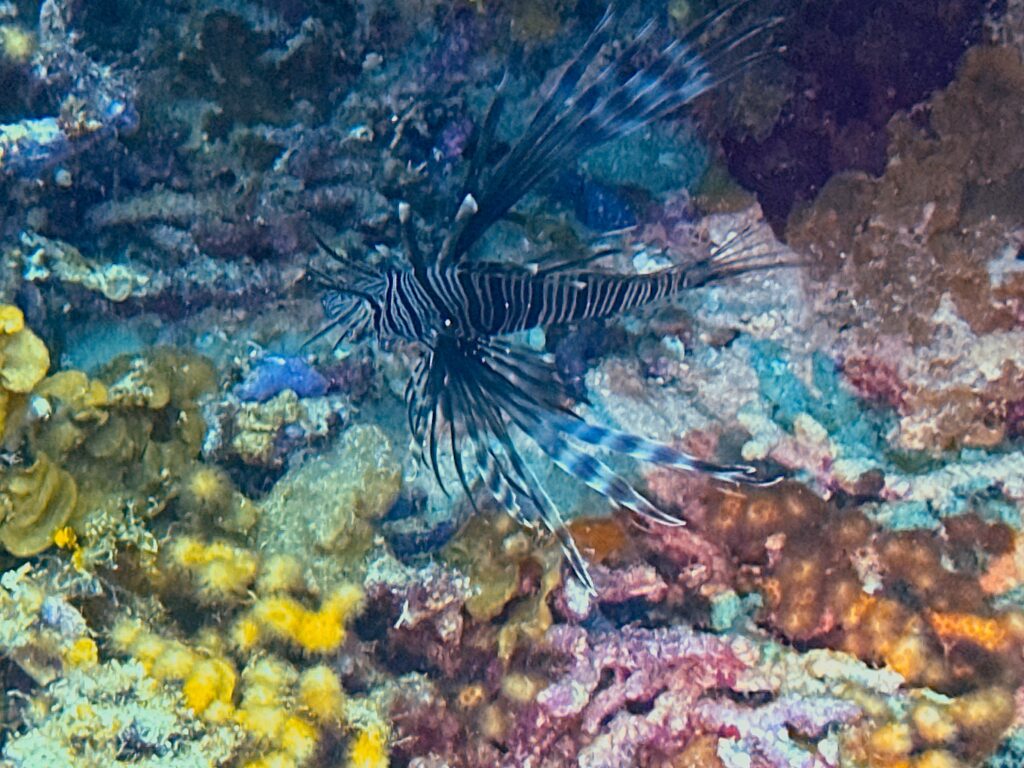
OK those are all ways to die from being attacked. But what about just being in the water in a human body that long ago evolved away from being able to live in water?
Of course you can be stranded where, eventually, you will tire to the point that you can’t stay afloat. Likely you’ll succumb to dehydration or hypothermia — much worse ways to go — before this happens since the human meatbag itself is positively buoyant even if you’re exhausted.
Let’s not forget air embolism, which is why you never hold your breath when ascending from depth (whether you’re snorkeling, scuba diving, or whatever). For every 33 feet you go underwater the pressure on your body (and lungs) increases by one sea level air pressure. And the reverse is true when you ascend. So if you hold your breath while coming up the air in your lungs will expand sorta like hot air balloons that expand as they go up into less dense air. This is a problem as it can rupture your lungs, especially if they were already “full” down deep in high pressure. Explosive decompression of lungs is bad, I think we can all agree. But it’s worse: the body keeps air in all kinds of places — the eye balls, the ears — those will explode too.
Then there are the bends — also known as decompression sickness. This is related to air embolism except in this case the rapid ascent makes nitrogen gas in your blood expand rapidly into bubbles. Those bubbles can go anywhere in the body but often settle in the joints causing people to bend over in excruciating pain. You can die from the bends or be permanently impaired. It can be cured though, if you’re close enough to a hyperbaric chamber — which is a whole different kind of misery. There is also in-water recompression if you’re too far away from help. But this requires going back underwater to depth while you are in excruciating pain. And often doesn’t work.
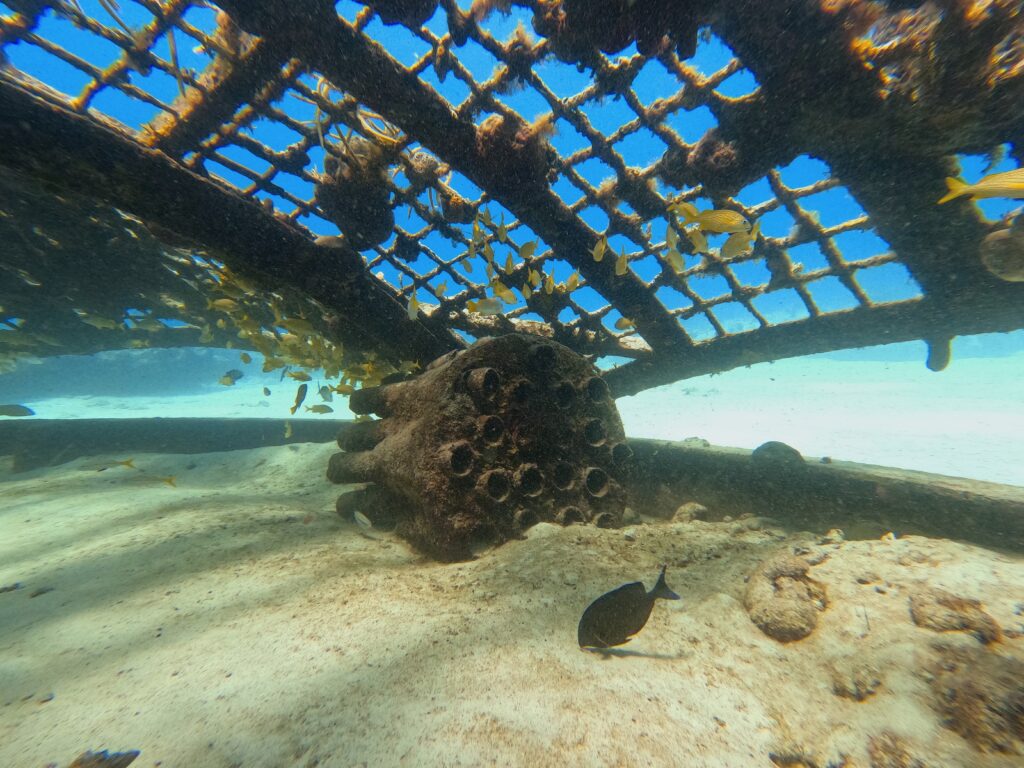
If you’ve seen the end of the movie 47 Meters Down you are familiar with nitrogen narcosis. Simply put, the way our bodies react to otherwise harmless gases at sea level can be very different to those gases under pressure. In this case nitrogen at depths over 100 feet causes an anesthetic, sometimes delirious change in consciousness. That in itself is not a problem, if you recognize it. The issue is that being nitrogen drunk can cause you to lose track of time, air availability, where you are, who you are, etc. The good news: all you need to do to get sober is ascend a little bit. A great device for screenwriters!
Speaking of gases, guess what becomes literal poison is you inhale too much of it? Oxygen! The very thing that normally keeps us alive. The air we breathe on land is 21% oxygen but sometimes scuba divers bump that percentage up for all kinds reasons. Suck that down for too long and you can suffer convulsions and death. With oxygen, like water, it’s fine line between life-giving and life-taking.
Look, there are a zillion ways to die underwater. You could be boiled alive near a geothermal vent or poisoned by accidentally ingesting too much salt water. You and your flimsy tourist sub could be crushed by the incredible pressure way down deep. (Interestingly, physically the human body can go a lot deeper under pressure than you might think. As humans are mostly just squishy flesh and liquid it all compresses fairly well. The problem is the parts of our bodies that hold air. That stuff only compresses or expands so much before your insides look like they’ve been puree’d.)
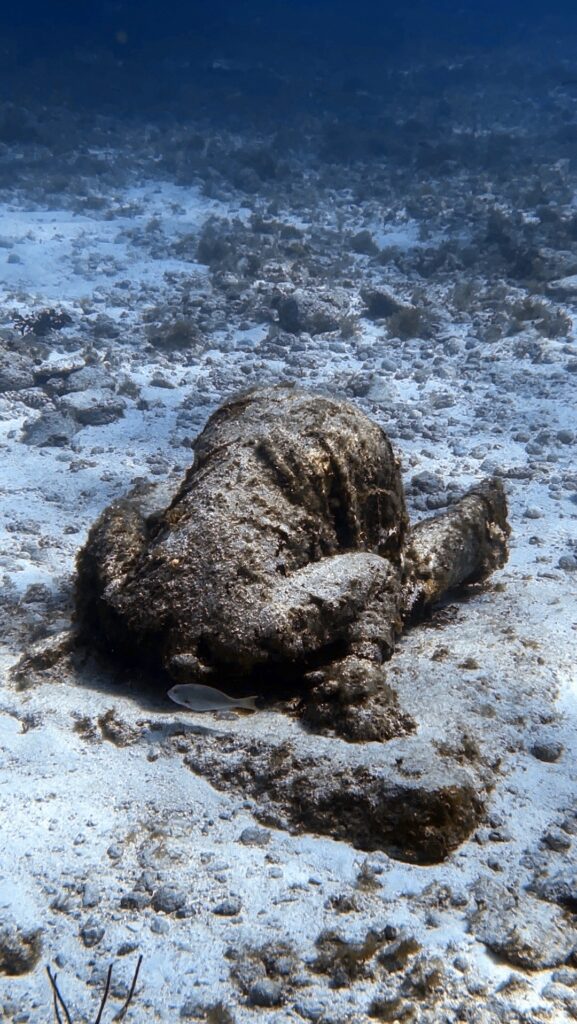
I’m often asked — sometimes by family members who I have forced to scuba dive with me — what’s the most scared I have ever been under the waves. It isn’t sharks. I have never encountered a shark that wanted anything to do with people. It isn’t equipment failure. There’s so much redundancy built-in, it’s just not an overwhelming concern. What has scared me, though, is solitude, the very few times I’ve lost track of my buddy or group. This is tough to do in the crystal waters of tropical reefs, but somehow I’ve done it. Only for a minute or two. But it is terrifying. There are procedures for locating other divers — e.g., look up, because everyone exhales and those long bubble ribbons can be seen from far away — but it is still heart-pounding. Much easier to lose people in murky water or cave systems. Which is why I don’t dive those without a really good reason.
Because of all this danger and unique ways to meet one’s end, there’s a long tradition of underwater horror in fiction. In film you can go back at least as far as 1955’s It Came from Beneath the Sea — probably further, though the technical challenges of filming underwater — hell, the technical challenges of breathing underwater — really only made using it as a film setting possible from the 1960’s onward.
Why do I love this sub-genre so dearly? Maybe because you don’t need much: simply, the environment surrounding you is a threat, an antagonist, a killer. Strictly speaking filmmakers don’t need a monster or a homicidal maniac or a ghost after their characters. The water itself wants you dead. There are a few films that go this route where this water vs. humans’ inability to live in it is the entire plot. See, for example, Open Water and its sequel. (This may also explain my fascination with space horror. The vacuum also wants you dead. More on that in a moment.)
Travelers, here I am mostly interested in movies that take place underwater. There are lots of ways to tell these stories, so here are some general categories organized by exposure where the majority of the movie takes place underwater as opposed to mostly on top of or near it.
- occasionally underwater (e.g., The Reef, The Shallows, Piranha, Jaws)
- mostly underwater (e.g., Deep Blue Sea, Sea Fever)
- underwater in a vessel/ship/outpost (e.g. No Way Up, Underwater, Below, The Poseidon Adventure)
- underwater only in self-contained breathing apparatus (these are very rare! e.g., The Deep House, 47 Meters Down)
- underwater supernatural (e.g. Aquaman, The Little Mermaid, no full-length horror movies of this type though there is the delightful non-sequitur of Fulci’s shark-fighting zombie)
One interesting question to ask when watching underwater horror is: if all this water were replaced by the void of outer space would anything be different? In general, if the answer is no you are watching not a great movie. If yes, then you are at least in store for water-based kills and other aspects of the marine environment that make it uniquely terrifying. Indeed many of the scripts for what became sea stories started as outer space stories. The conversion is not very difficult. Sometimes the film-viewing public seems to want stars and planets, but sometimes, like in 1989, they only want saltwater and sea bubbles.
Let’s backstroke a bit to the year 1989. Something was in the water, for sure. It’s been called the B-Movie Sea Monster Wars where we got at least six underwater horror flicks all in one year. What the hell? Why?
The public may have been primed for undersea tales of doom by the discovery of The Titanic in 1985 by Bob Ballard. That’s one theory. Hard to deny is that after Aliens in 1986 there was a surge in sci-fi movies centered around blue-collar workers finding themselves up against terrifying creatures, usually in a dark, dank, remote setting. Around 1987 everyone in Hollywood apparently that knew James Cameron, coming off of The Terminator and Aliens, was making an underwater flick, which would eventually be called The Abyss, for a summer release in ’89. It wasn’t initially known whether it would be horror like Aliens mostly was. Of course, The Abyss when released was straight sci-fi. But rival filmmakers couldn’t have known as they ramped up their efforts. So we got a lot of underwater horror in a single year that no one really asked for. Let’s swim on over to the films to wrap up this shanty!
DeepStar Six (Jan. 13, 1989)
This creature feature is basically a Friday the 13th reunion. Sean Cunningham, director of the original Friday directs here; Kane Holder, the Jason Voorhees in the later films is the stunt coordinator; even Ronn Carroll, who played the policeman at the very end of the first film is in this flick.
The story here is about to become familiar: a crew is stationed underwater — in this film it is a military installation installing nuclear missiles — when they encounter something nasty. In this case it’s a creature of unknown, possibly alien original.
The character of Snyder played by Miguel Ferrer is a likable horrible person. He tells the ship’s computer that they are under attack at which point the military-minded computer suggests a nuclear counterattack, which Snyder does. This only serves to basically ruin the station with a shockwave. Snyder eventually meets his end by trying to escape in a pod that somehow is not pressurized. He explodes on ascent.
The creature design here is very practical, cool, and gross. And unlike many of the films of 1989 it actually does feel like the setting is on an undersea station rather than a soundstage. Lest you have forgotten its Friday the 13th connections the conclusion of DeepStar Six is a strikingly similar shock ending to that film, which also involved water.
The Rift (aka Endless Descent — March 1, 1989)
It’s possible the best thing about this film is its tagline: “YOU CAN’T HOLD YOUR BREATH & SCREAM AT THE SAME TIME”. And yet, this is not true, I scream underwater all the time.
The plot: an experimental sub is sent to find a lost experimental sub but in the process stumble upon a whole submarine laboratory devoted to genetic engineering experiments. R. Lee Emery (drill sergeant from Full Metal Jacket and later installments of the Texas Chainsaw Massacre franchise) is the stand-out here, though his ability to ad lib demoralizing insults is underused.
There are some underwater sequences outside the sub, though it is clear the budget demanded that they find an air-filled cave several miles under the sea where they could film more normal walking-around scenes on a dry set. All effects in The Rift are models and practical, though literally nothing would suggest they were on a submarine — almost as though they were going for a 1950s sci-fi look.
One thing that made me chuckle is that the filmmakers basically avoided the problem of dialogue when underwater. Everyone talks to each other normally with regulators in their mouths. OK. It’s almost like the filmmakers didn’t even care that the story was supposed to be underwater. Like, how is there a lidless aquarium on a submarine? How are people still breathing after a massive, fiery explosion in an underwater cave?
Leviathan (March 17, 1989)
The Rift was released two weeks before our next film, Leviathan, and was also produced by DeLaurentis. Leviathan’s budget: $30M. The Rift’s budget: a hell of a lot less. The plot is basically the same though. Do investors think “You know what, this is a good story, but I think it would do better with laughable production design” because that’s essentially what happened here. Or maybe it was a kind of A-B test: let’s see which film style audiences like more?
In any event Leviathan has a stellar cast: Peter Weller, Richard Crenna, Daniel Stern, Hector Elizondo, Ernie Hudson. But most importantly, Stan Winston and his team did the effects — and oh my did they. The genetically engineered creature is The Thing amped way up. It’s basically a slimy, clawed, tentacled mass of flesh that assimilates anything it comes in contact with. Just wonderful grotesque body horror. Also of note are the deep sea mining scuba suits, which are used to fun dramatic effect. We can thank Winston for these as well.
If you see only one of these six movies Leviathan should be it.
Lords of the Deep (April 21, 1989)
This film produced by Roger Corman could easily have been made in 1973, aesthetically. There’s a definite Space: 1999 vibe here. Here’s the thing: this isn’t a well-made movie, but it is a well-done movie. If shlock isn’t your thing may I suggest you watch this via Mystery Science Theater 3000 which did a hilarious job annotating it in season 12?
Hard really to know what’s going on here. There’s alien goo and impending global natural catastrophe (as the opening crawl tells us “In the year 2020 – Man has used up and destroyed most of the Earth’s resources.”) Also there’s a homicidal computer, ala HAL, and an insane station commander.
You might enjoy the earnest overreacting of Priscilla Barnes from late era Three’s Company. Or you might enough the truly laughable puppetry of the creature. Or you might not. One thing is for sure when it is all over you will still not be sure who the lords of the deep are.
Alien from the Abyss (May 27, 1989 — aka Alien from the Deep)
Never count out the Italians when there is a horror film trend to be capitalized upon. This was one of the last films in the storied career of Antonio Margheriti who brought us Castle of Blood and Cannibal Apocalypse, among other gems.
The story here follows a Greenpeace camera crew investigating a volcano where the military is dumping radioactive waste. It’s basically one extended jungle chase sequence. Lots of snakes. So much so that it doesn’t go underwater until more than halfway through the film and even then not for long.
You may be thinking radioactive waste dumped into a volcano — this is a 1950’s-esque mutant film right. Incorrect. The baddie here is an alien under the sea. Huh? I have no explanation, but there is great gore and the Kaiju-like creature is pretty great once we’re allowed to see more than its claw. The ending is ripped straight from Aliens as our Greenpeace activists do battle with front loader heavy machinery.
Honestly this was a pretty good film, even if it barely fits into any of our underwater horror categories.
The Evil Below (July 1, 1989)
This is also an Italian film, dubbed as horribly as you’ve comfortably come to love in giallo films.
The premise here is promising: a crew is searching for the shipwreck of El Diablo, a ship whose cargo included stolen religious artifacts. But also a curse! You see, this is a haunted shipwreck. There are underwater sequences, but they are so poorly shot it is nearly impossible to see much less figure out what’s happening. I’m not sure what the evil was in The Evil Below, but it was below. So no misleading advertising here.
Here’s a handy reference chart for our journey through this unique moment in cinematic history:

Well, travelers, it’s time to surface. I hope you enjoyed our excursion under the waves. Let’s take this slowly and gently. Exhale on ascent. Don’t look down. Who knows what swimming up beneath us?
A full list of the movies mentioned above can be found at Letterboxd. Find out where to watch there.

